I'll explore innovative approaches to window trim that combine aesthetic appeal with practical functionality. The final two ideas will focus on specialized design strategies that enhance both the visual and performance aspects of exterior window treatments. These concepts will showcase how window trim can be more than just a decorative element, serving multiple purposes in home design and energy management.Transforming your home's exterior appearance doesn't require a complete renovation when you focus on the details that matter most. Exterior window trim plays a crucial role in defining your home's character, protecting against weather elements, and enhancing overall curb appeal. The right trim can make windows appear larger, create visual interest, and tie together different architectural elements for a cohesive design. Whether you're building new or updating existing features, 2025 trends embrace both timeless classics and bold new directions that reflect personal style while maintaining broad appeal. From natural wood finishes that celebrate craftsmanship to sleek modern profiles that emphasize clean lines, window trim offers endless possibilities for customization. The investment in quality trim materials and thoughtful design choices delivers lasting value through improved aesthetics, better weather protection, and increased home value that will serve you well for decades to come.
1. Classic White Wood Window Trim
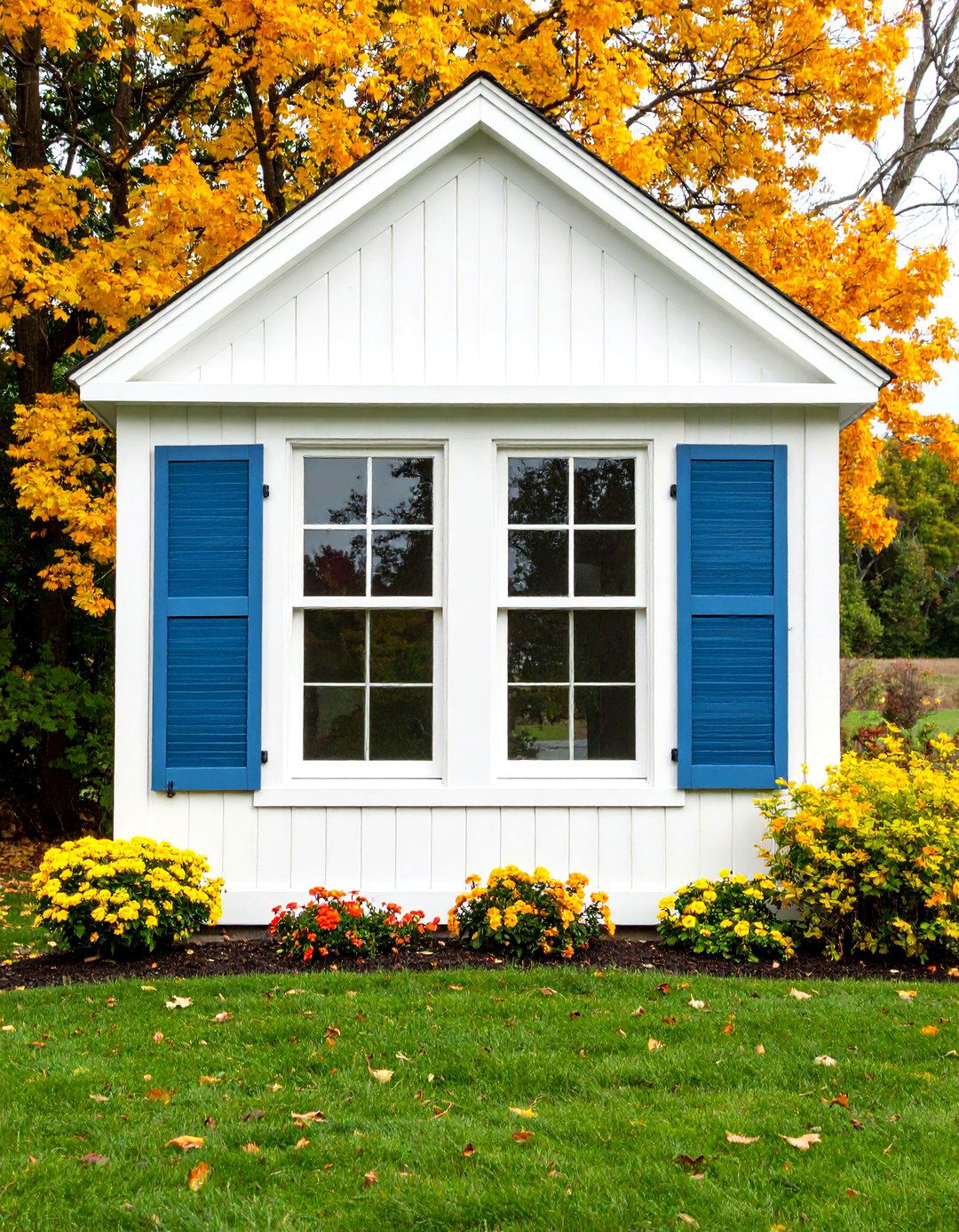
White wood trim remains the gold standard for exterior window design, offering timeless elegance that complements virtually any architectural style. This versatile choice works beautifully with both traditional and contemporary homes, creating crisp contrast against darker siding while maintaining a clean, finished appearance. The natural grain of wood adds texture and depth that painted alternatives simply cannot match, while the bright white finish reflects light to make windows appear larger and more prominent. Quality wood trim accepts paint beautifully and can be refreshed easily over time, making it a practical long-term investment. When properly maintained with regular painting and sealing, wood trim can last decades while maintaining its classic appeal. Consider pairing white wood trim with shutters in coordinating colors to create a cohesive design that enhances your home's traditional charm and curb appeal.
2. Bold Black Window Trim for Modern Appeal
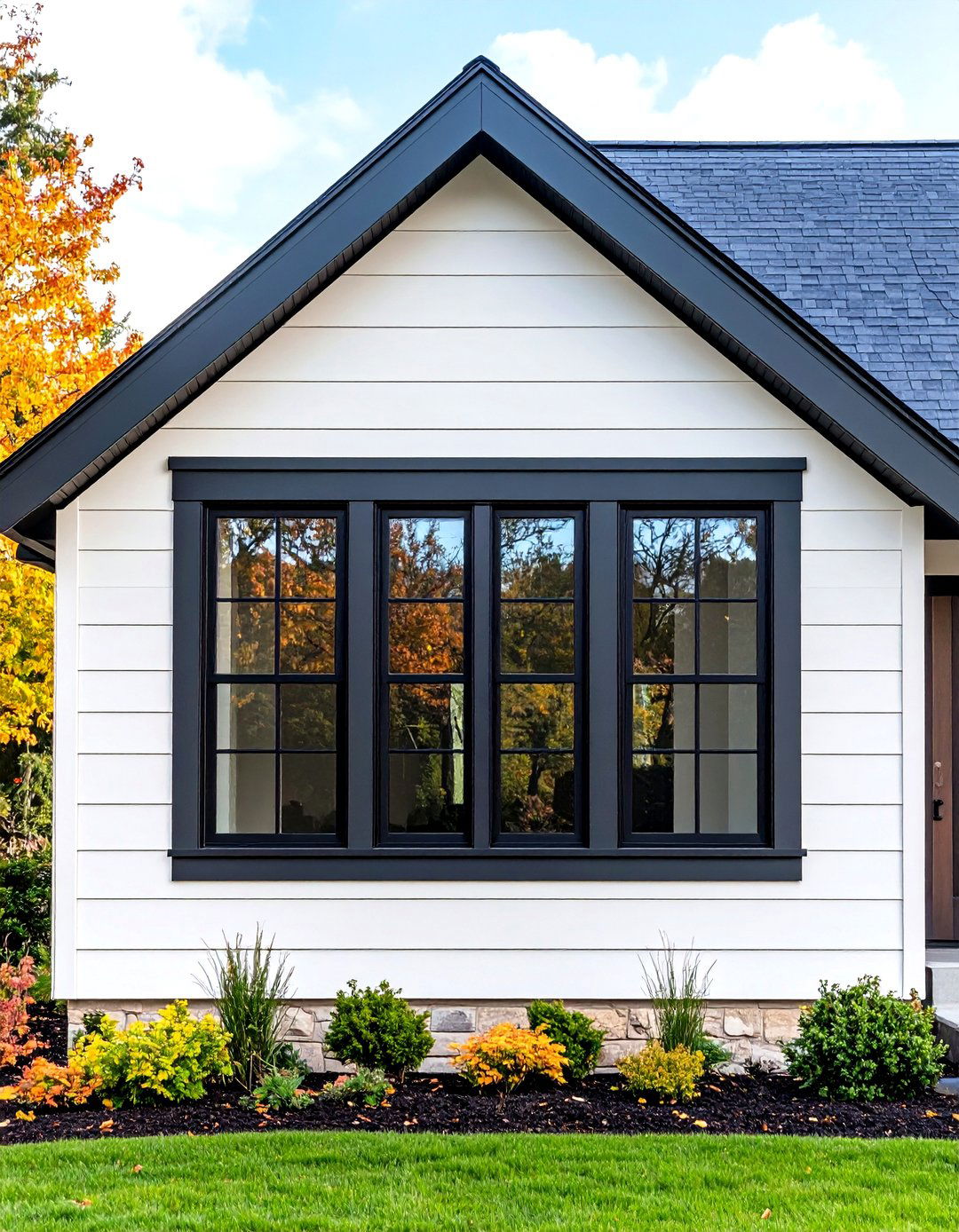
Black window trim creates dramatic contrast and sophisticated elegance, making it one of the most popular choices for modern homeowners seeking to make a statement. This striking color choice works particularly well against light-colored siding, creating sharp definition that highlights architectural details and window proportions. Professional architects often describe black trim as "adding eyeliner to your windows," emphasizing how it draws attention and creates visual impact. The bold contrast works exceptionally well with contemporary and farmhouse styles, where clean lines and strong contrasts are valued design elements. Black trim also offers practical benefits, as it tends to hide dirt and imperfections better than lighter colors, reducing maintenance requirements. When selecting black trim, consider the overall balance of your exterior color scheme to ensure the boldness enhances rather than overwhelms your home's design aesthetic.
3. Modern Flat Stock Window Trim
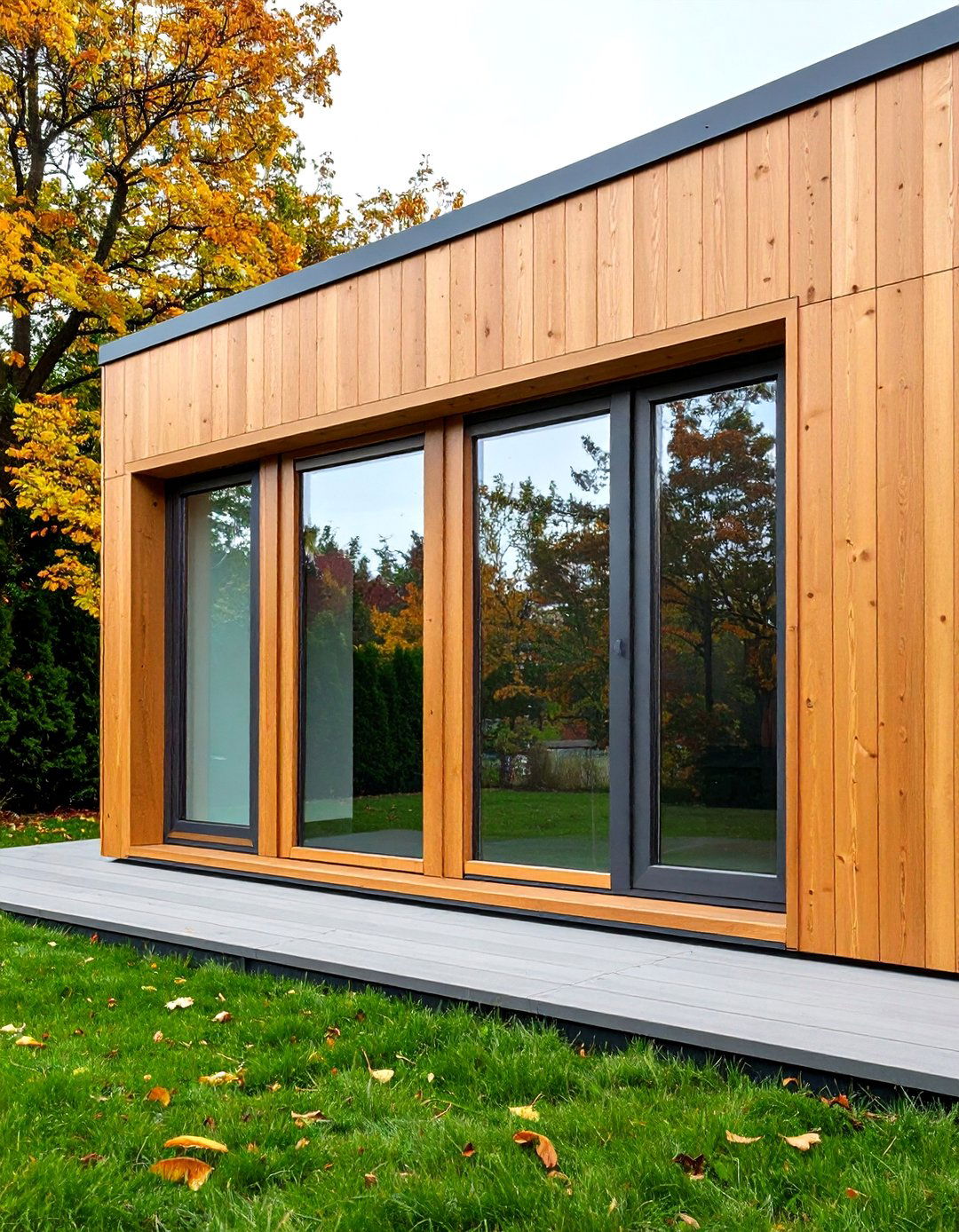
Contemporary architecture demands trim solutions that emphasize simplicity and clean lines, making flat stock trim the perfect choice for modern homes. This minimalist approach uses smooth, rectangular profiles that surround windows without introducing competing design elements. The streamlined appearance allows windows to stand out as architectural features while maintaining the uncluttered aesthetic that defines contemporary design. Flat stock trim works particularly well with large picture windows and floor-to-ceiling installations where ornate details would detract from the overall impact. Ultra-thin profiles made from metal or stained wood can provide subtle definition while maintaining the minimalist contrast that modern designs require. This approach proves that effective trim doesn't need elaborate profiles or decorative elements to make a significant visual impact on your home's exterior design.
4. Farmhouse Style Wide Window Trim
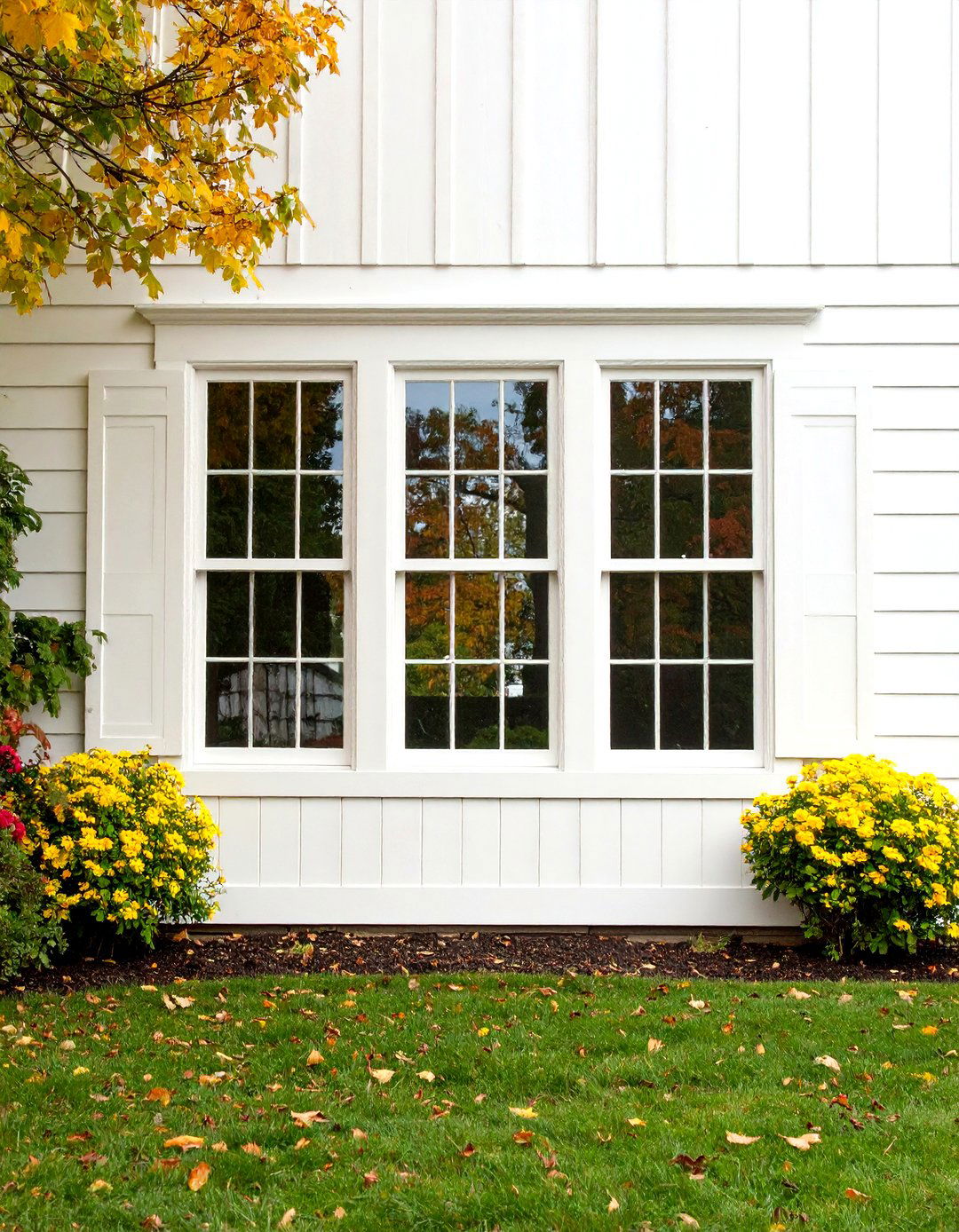
Farmhouse aesthetics celebrate substantial, purposeful design elements, and wide window trim perfectly embodies this philosophy with its bold, welcoming presence. This style typically features boards that are wider than standard trim, creating a more prominent frame that gives windows greater visual weight and importance. The generous proportions work especially well on homes with large windows or when you want to make smaller windows appear more substantial. Wide trim pairs beautifully with board-and-batten siding, shiplap exteriors, and other farmhouse design elements to create a cohesive rural aesthetic. The farmhouse style reflects simplicity of rural living, where trim serves both functional and decorative purposes while maintaining understated elegance. Consider painting wide trim in classic white or soft cream to maintain the authentic farmhouse character while ensuring your windows become focal points that enhance your home's welcoming appearance.
5. Colonial Window Trim with Decorative Headers
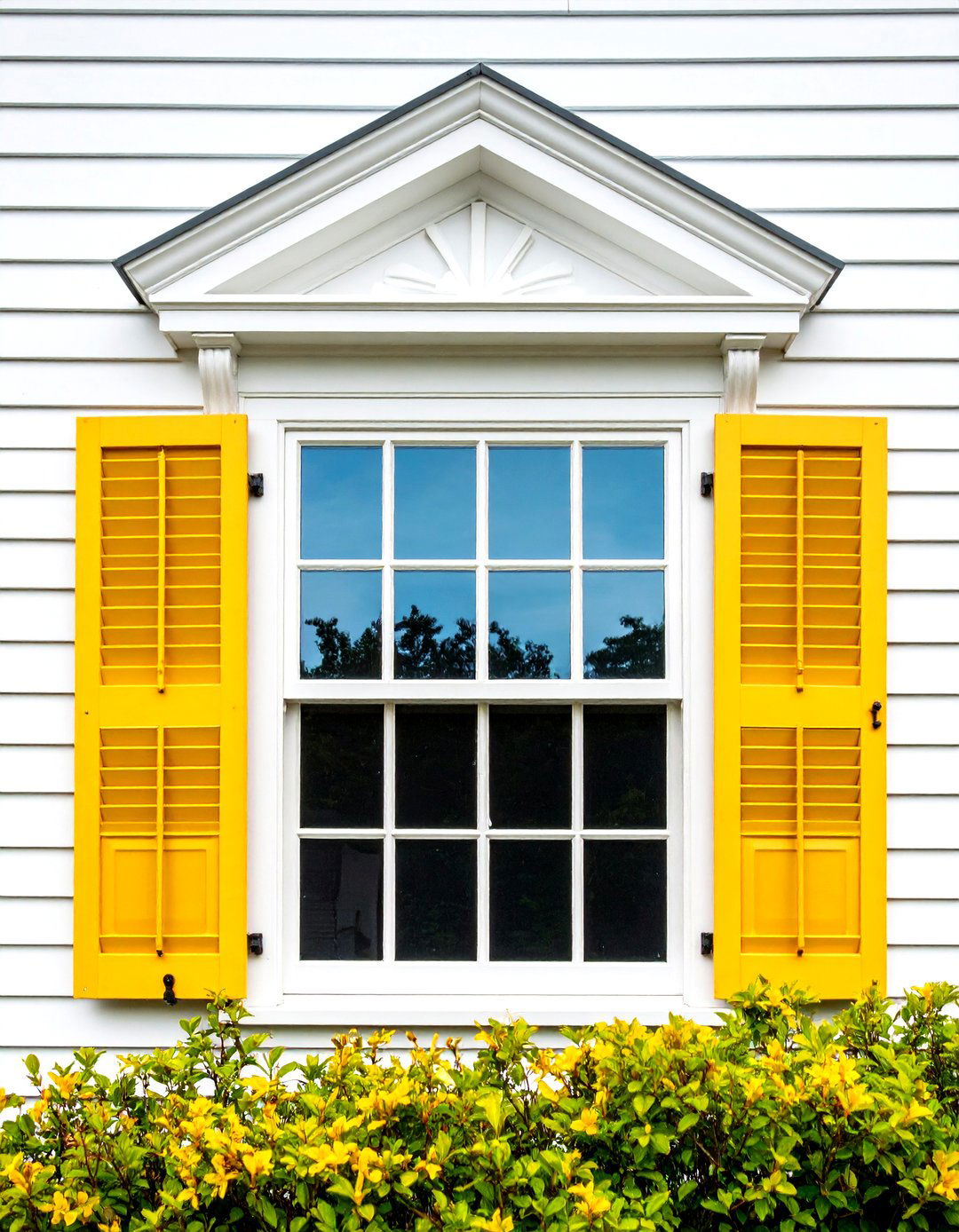
Colonial architecture embraces symmetry and refined proportions, making decorative window trim an essential element for achieving authentic historical character. This style typically features flat casing with decorative headers and sills that create visual interest while maintaining the clean lines characteristic of colonial design. The subtle ornamentation adds sophistication without overwhelming the overall aesthetic, striking the perfect balance between function and beauty. Colonial trim often matches the window frame color, expanding the visual appearance of windows while maintaining symmetrical design principles. Traditional colonial colors include crisp whites, soft creams, and muted earth tones that complement brick, stone, or clapboard siding. Compound curves and multi-piece trim assemblies can add distinctly formal touches when you want to emphasize the historical accuracy and elegant proportions of colonial architecture.
6. Craftsman Clean-Line Window Trim
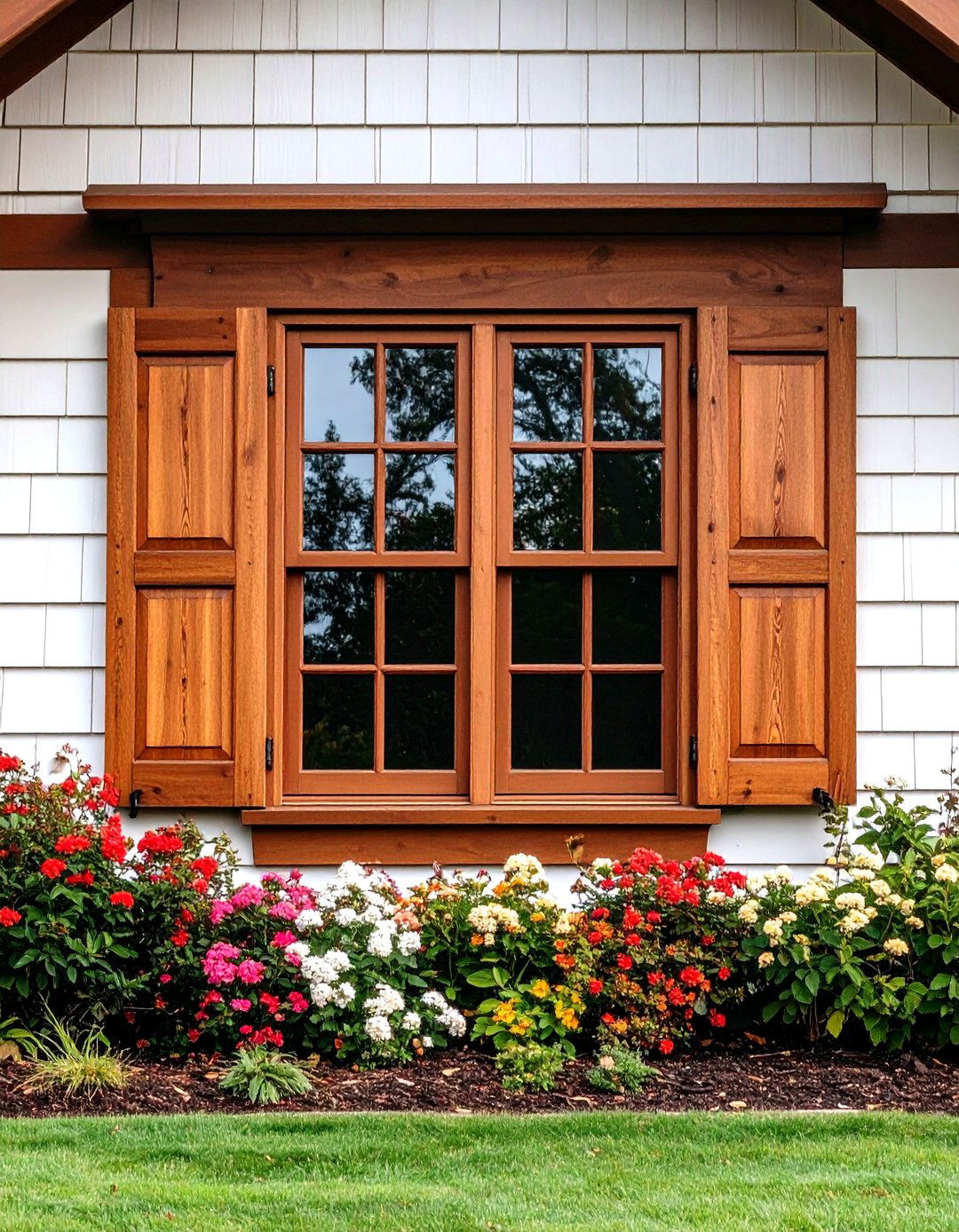
The Craftsman movement celebrated handcrafted simplicity, and this philosophy translates beautifully into window trim that emphasizes honest materials and straightforward design. Craftsman trim features simple rectangular profiles with minimal curves and clean cap details at the head, avoiding unnecessary ornamentation in favor of functional beauty. This approach creates a sense of understated elegance that works particularly well with bungalow-style homes and properties that emphasize natural materials. The style typically uses slightly wider boards than standard trim, giving windows more substantial framing without resorting to elaborate molding profiles. While vintage Craftsman trim isn't readily available everywhere, the style's emphasis on simplicity and craft makes it worth seeking from specialty lumber yards. Consider staining Craftsman trim to highlight natural wood grain, or paint it in earth tones that complement your home's connection to natural surroundings.
7. Fiber Cement Window Trim Durability
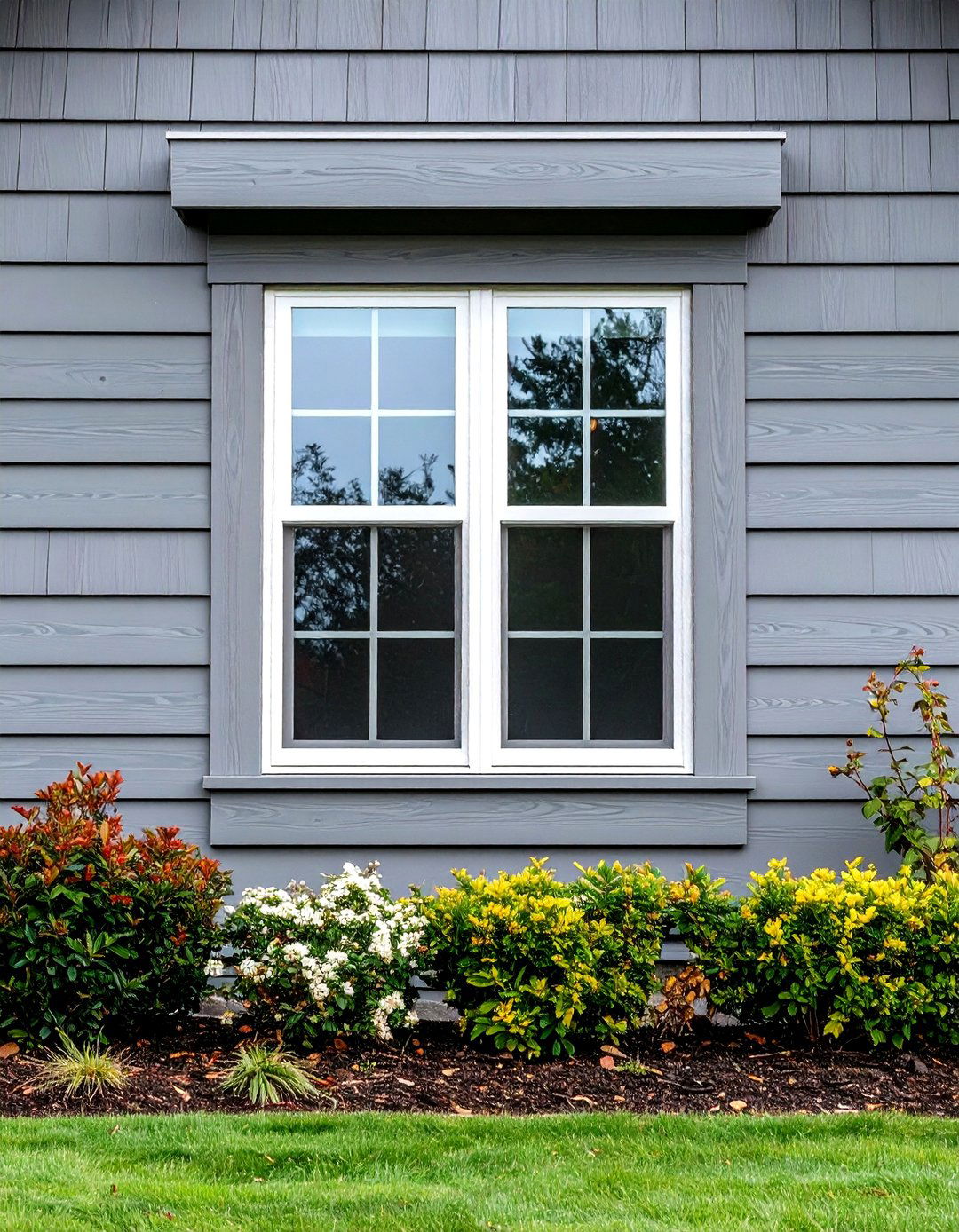
Fiber cement trim offers exceptional durability and weather resistance, making it an ideal choice for homeowners seeking long-term performance with minimal maintenance requirements. This engineered material combines cement, sand, and cellulose fibers to create trim that resists moisture, insects, and temperature fluctuations that can damage traditional wood products. The material comes in various textures including realistic wood grain patterns and smooth finishes, with factory-applied colors that maintain their appearance for years. Fiber cement trim expands and contracts at the same rate as fiber cement siding, preventing caulk joint failures that can occur with mixed materials. While the initial cost may be higher than wood alternatives, the reduced maintenance requirements and extended lifespan make it a cost-effective investment. Available in multiple sizes and reversible profiles, fiber cement trim offers design flexibility while delivering the heavy-duty durability that modern homes require.
8. Low-Maintenance Vinyl Window Trim
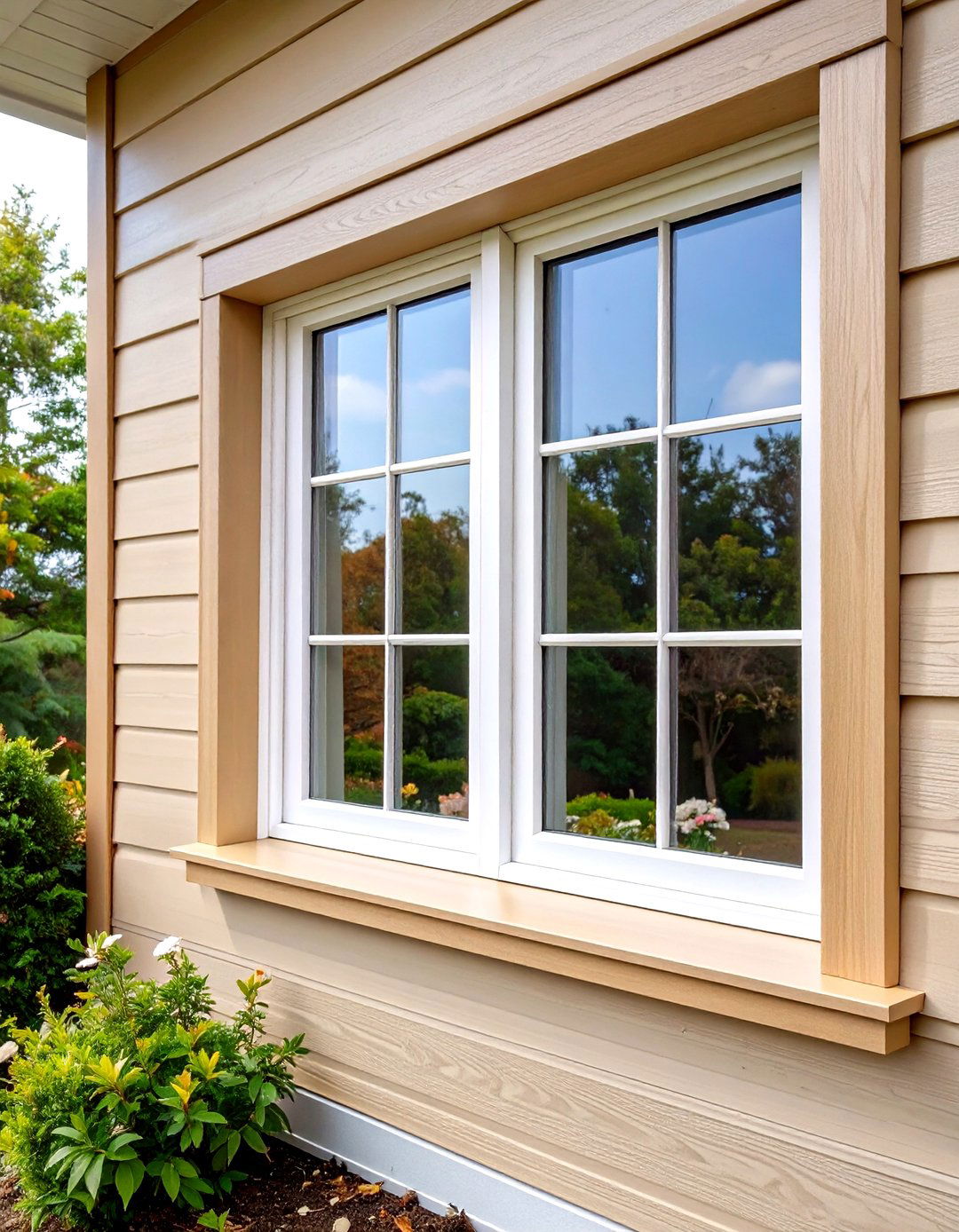
Vinyl trim provides an attractive, budget-friendly solution for homeowners who want beautiful windows without ongoing maintenance demands. This material resists warping, rotting, and insect damage while maintaining its appearance through various weather conditions. Modern vinyl products offer realistic wood grain textures and come pre-finished in popular colors, eliminating the need for painting or staining during installation. The lightweight material makes installation easier than heavier alternatives, potentially reducing labor costs for professional installations. Vinyl trim works especially well in regions with freeze-thaw cycles, where its flexibility and durability provide reliable performance year after year. While some premium wood alternatives may offer superior aesthetics, vinyl trim has improved significantly in appearance and now provides an excellent balance of affordability, durability, and visual appeal. Consider vinyl trim when you want attractive windows with minimal long-term maintenance commitments.
9. Contrasting Color Window Trim Schemes
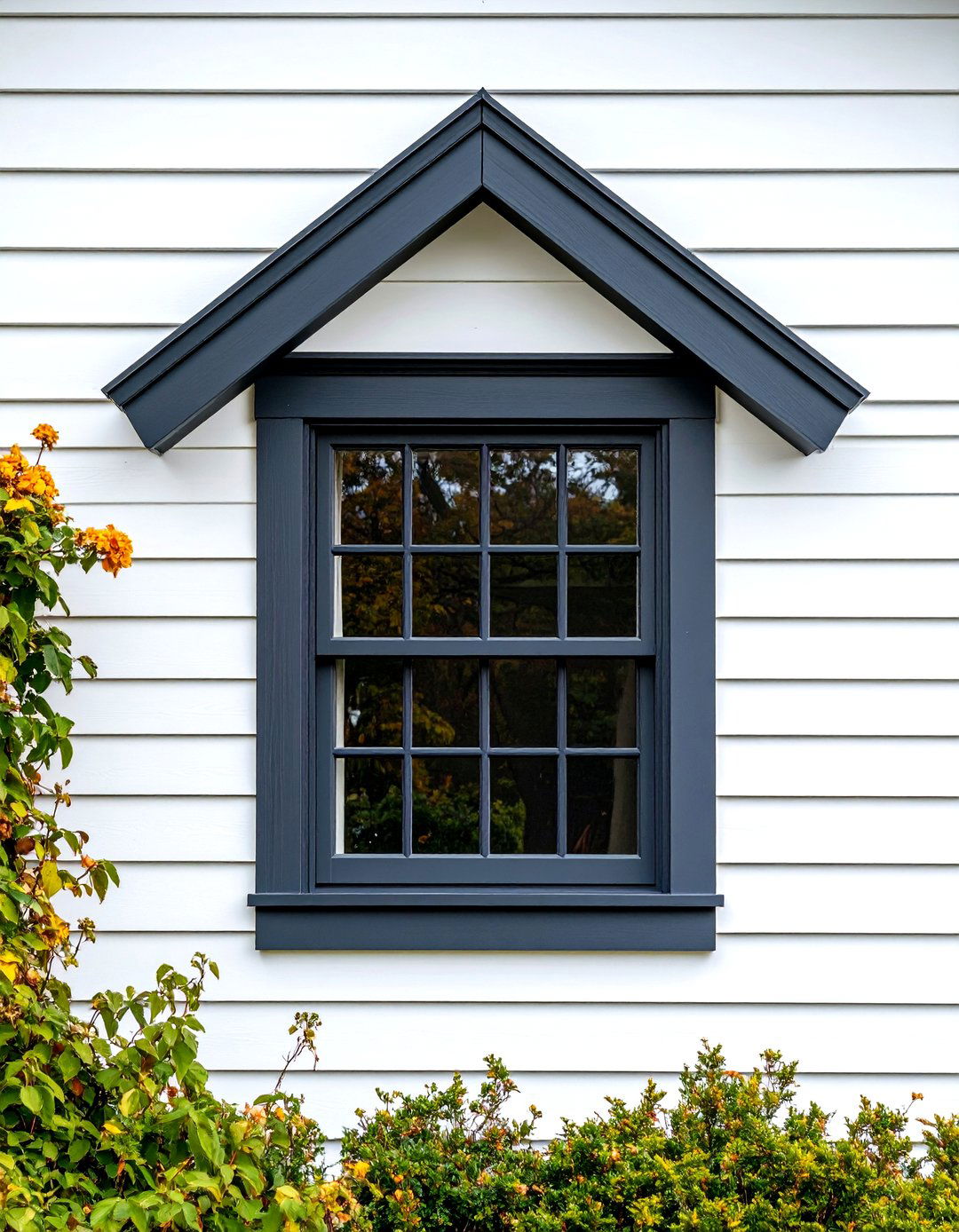
Creating visual drama through contrasting trim colors allows you to transform your home's appearance while highlighting architectural features and window proportions. Bold combinations like dark gray or black trim against light siding create sharp definition that makes windows pop and adds contemporary sophistication. This approach works particularly well when you want to modernize a traditional home or add personality to a plain exterior design. 2025 trends encourage colorful trims and contrasting combinations rather than exclusively white options, offering opportunities to express personal style. Consider the overall balance of your color scheme, ensuring contrasting trim enhances rather than overwhelms your home's design. Popular combinations include white siding with charcoal trim, sage green siding with cream trim, or natural wood siding with black window frames. The key lies in selecting colors that complement your home's architectural style while creating the level of contrast that suits your aesthetic preferences.
10. Sage Green Natural Window Trim
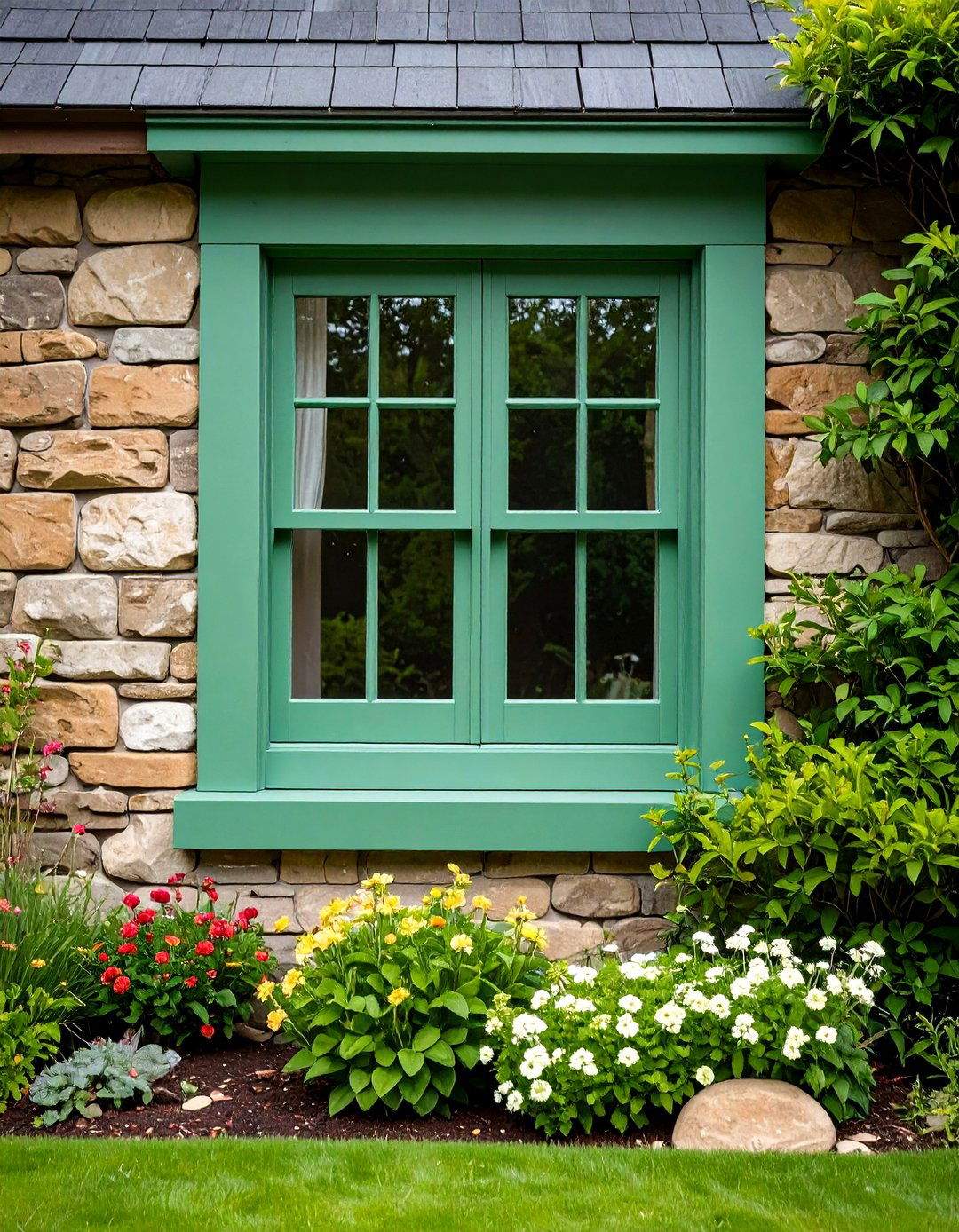
Sage green window trim brings natural, earthy sophistication to exterior design, creating connections between your home and surrounding landscape while maintaining timeless appeal. This muted yet versatile color works beautifully with various siding materials including stone, brick, wood, and fiber cement, offering flexibility across different architectural styles. The color harmonizes with nature and provides a calming feel that welcomes visitors while adding personality without overwhelming the overall design. Sage green pairs exceptionally well with white or cream siding, warm wood accents, and natural stone elements, making it ideal for homes that emphasize organic materials and earth-tone palettes. This natural tone reflects Cottagecore trends and delivers a subtle, rural aesthetic that works well in both countryside and urban settings. Consider sage green trim when you want color that feels fresh and contemporary while maintaining broad appeal and connection to natural surroundings.
11. Charcoal Gray Sophisticated Window Trim
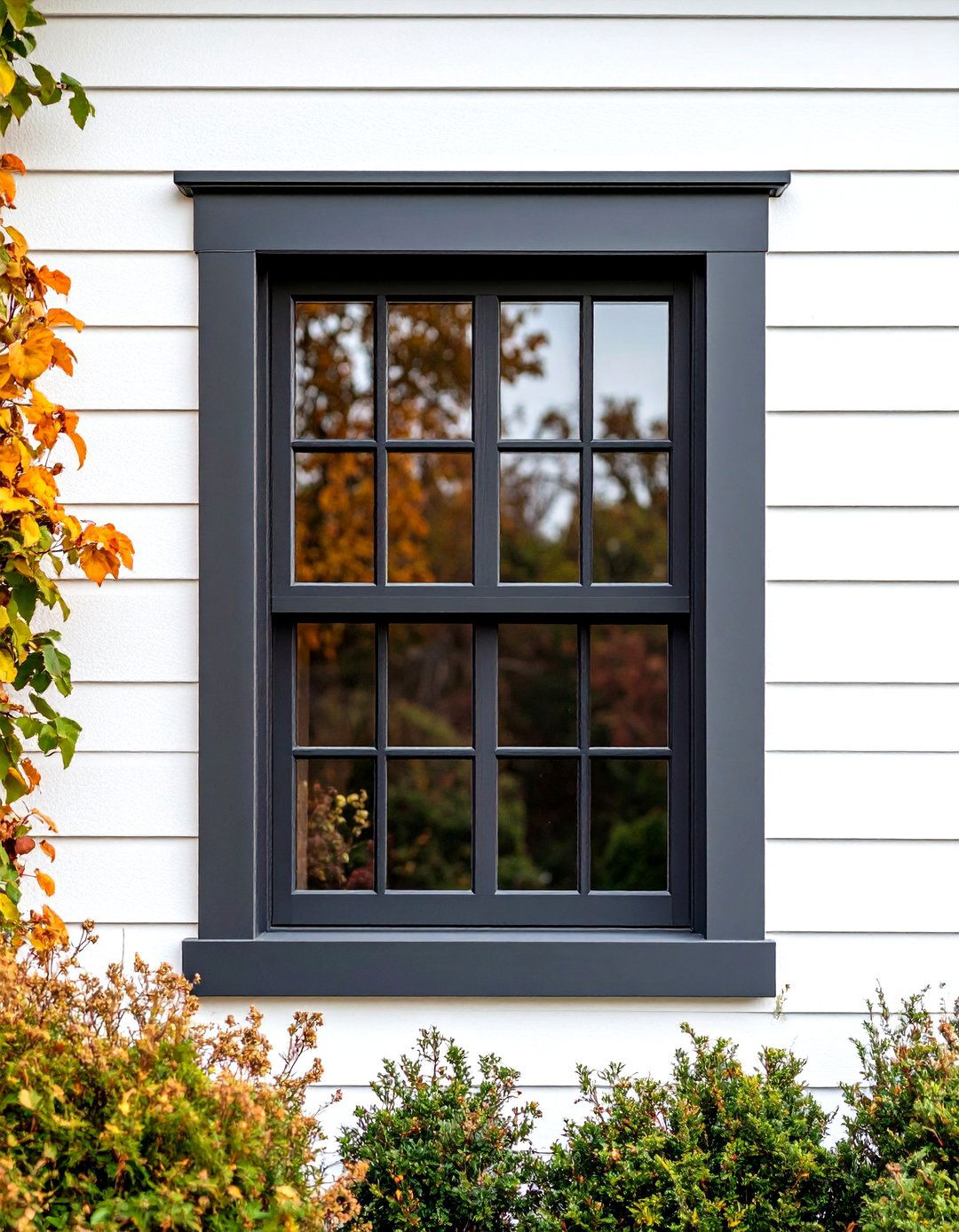
Charcoal gray window trim delivers contemporary sophistication and powerful contrast that deepens the appearance of lighter elements while maintaining versatility across architectural styles. This refined neutral offers more warmth than stark black while providing similar dramatic impact against light-colored siding or natural materials. The color creates stunning backdrops for landscaping and works equally well on traditional homes, especially when paired with design elements like copper gutters or warm metal fixtures. Charcoal gray trim provides excellent definition without the harsh contrast that pure black can create, making it more approachable for homeowners who want drama with subtlety. Dark gray frames create tailored, contemporary looks with sharp profiles that work beautifully against white stucco walls or painted clapboard siding. This sophisticated color choice complements both warm and cool color schemes while providing the bold contrast that makes windows architectural focal points.
12. Victorian Ornate Window Trim Details
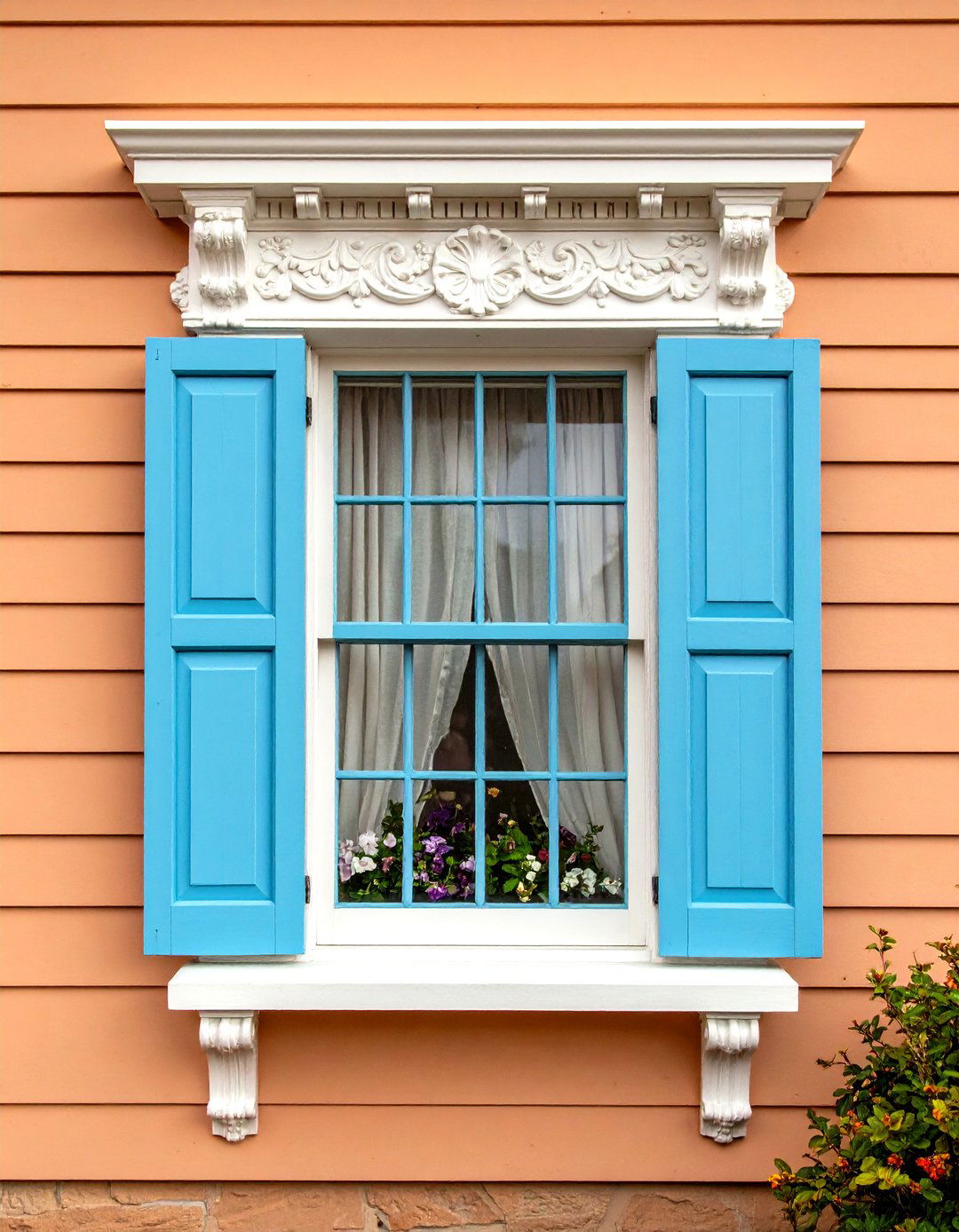
Victorian architecture celebrates elaborate ornamentation, and window trim provides the perfect opportunity to showcase intricate details that define this romantic style. Victorian trim features ornate moldings, decorative corbels, and elaborate headers that create visual complexity and architectural interest. These detailed elements work particularly well on Queen Anne style homes, farmhouses with Victorian influences, and properties where historical accuracy is important. The ornate trim typically includes multiple layers of molding, carved elements, and proportioned details that create depth and shadow lines around windows. Traditional Victorian colors often include sage green, terracotta, and other natural tones that complement the era's preference for earthy, rich color palettes. When installing Victorian trim, attention to detail in both proportions and finishing becomes crucial for achieving authentic results. Consider working with specialized millwork suppliers who can provide historically accurate profiles and decorative elements that capture the ornate beauty of Victorian design.
13. Rustic Cedar Wood Window Trim

Cedar wood trim offers natural beauty and inherent weather resistance, making it an excellent choice for homeowners who appreciate authentic materials with rustic character. Cedar naturally resists moisture and insects, providing longer-lasting performance than other wood species while developing beautiful weathered patinas over time. The distinctive grain patterns and warm tones of cedar complement log homes, mountain cabins, and properties that emphasize natural building materials. Natural cedar tones add warmth and contemporary luxury while maintaining rustic appeal that works well with stone, brick, and other natural exterior materials. Cedar trim can be left natural to weather gradually, stained to enhance grain patterns, or painted to match specific color schemes. The material accepts various finishes beautifully while maintaining its dimensional stability through seasonal changes. Consider cedar trim when you want authentic wood character that will age gracefully while providing reliable protection and natural beauty that improves with time.
14. Industrial Metal Window Trim
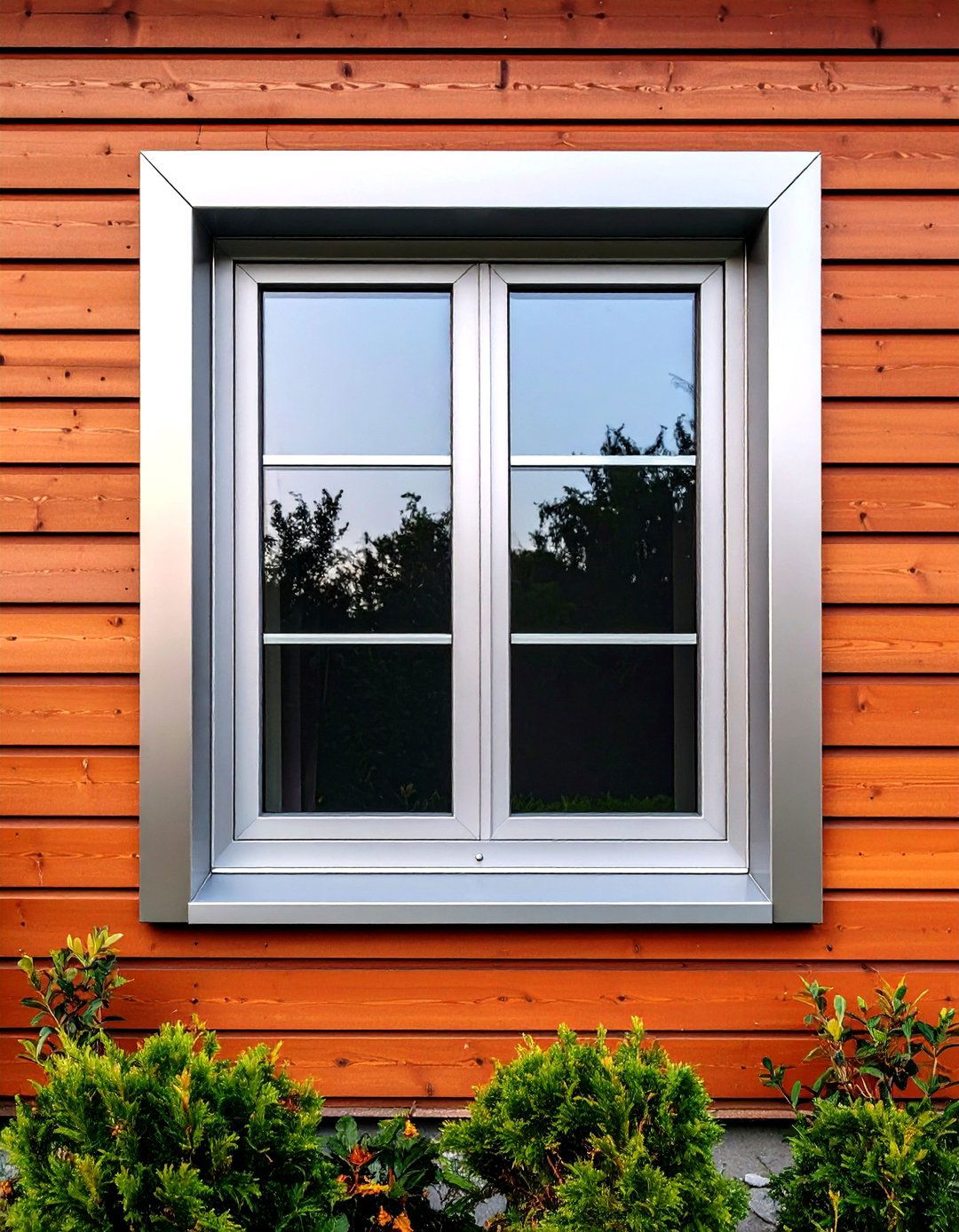
Metal window trim brings industrial sophistication and sleek functionality to contemporary architecture, offering durability and modern aesthetics in one package. Ultra-thin metal profiles provide minimalist contrast that outlines windows with precision while maintaining the clean lines essential to contemporary design. Materials like aluminum, steel, and composite metals resist weathering, require minimal maintenance, and offer excellent longevity in various climates. Metal trim works particularly well in commercial and mixed-use developments, especially when paired with panel siding systems rather than traditional lap profiles. The material's ability to be fabricated into precise shapes and custom profiles makes it ideal for unique window configurations and modern architectural details. While metal trim costs more than some alternatives, its longer lifespan and minimal maintenance requirements provide excellent value when properly installed. Consider metal trim for contemporary homes where sleek lines, industrial aesthetics, and long-term performance are design priorities.
15. Two-Tone Window Trim Combinations
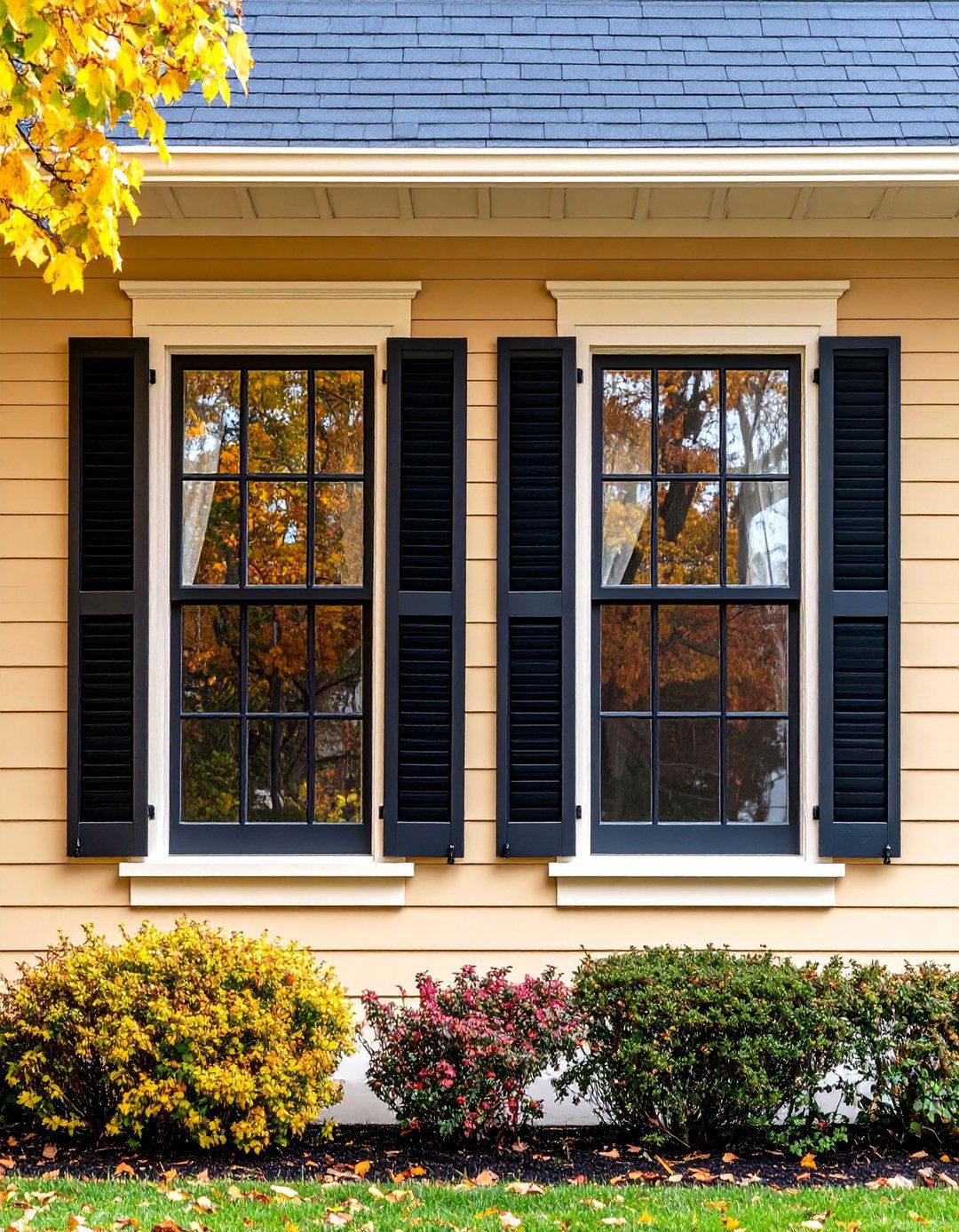
Two-tone trim combinations create visual interest and architectural depth while allowing you to incorporate multiple colors into your exterior design scheme. This approach can involve using different colors for various trim components or creating coordinated relationships between window trim, shutters, and other exterior elements. Popular combinations include dark window sashes surrounded by lighter trim frames, creating layered visual effects that highlight window proportions and architectural details. Two-tone approaches work particularly well when you want to blend existing architectural elements with new additions while maintaining design continuity. Consider using one color for the primary trim and a complementary shade for decorative headers, sills, or accent pieces to create sophisticated color relationships. Current trends encourage moving beyond exclusively white trim toward more personalized color combinations that reflect individual style while maintaining broad appeal. This technique allows creative expression while ensuring your windows become distinctive architectural features that enhance overall curb appeal.
16. Seamless Monochromatic Window Trim
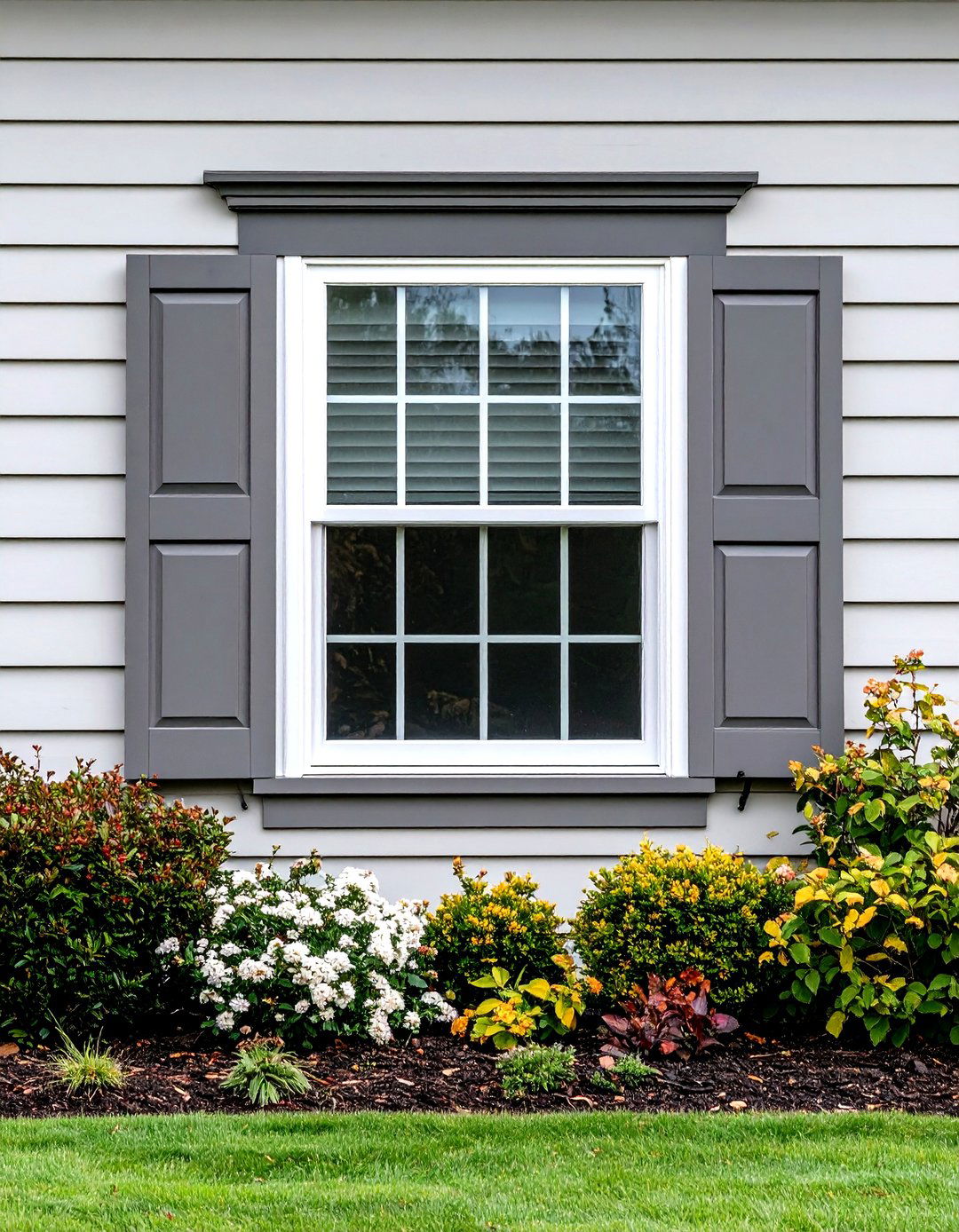
Monochromatic trim design creates sophisticated unity by using varying shades of the same color family to achieve subtle contrast without visual disruption. This approach works particularly well when you want trim that complements rather than contrasts with your siding color, creating refined, understated elegance. The technique involves selecting trim colors that are one to three shades lighter or darker than your primary siding, creating definition while maintaining color harmony. Monochromatic schemes work beautifully with greige tones, warm beiges, and sophisticated neutrals that blend gray and beige for timeless, approachable appearances. This approach allows architectural details to shine without competing color elements, making it ideal for homes with interesting textures, mixed materials, or complex rooflines. The subtle contrast provides enough definition to frame windows effectively while creating cohesive design that feels intentional and professionally coordinated. Consider monochromatic trim when you want sophisticated results that emphasize architectural form over color contrast.
17. Textured Surface Window Trim Finishes
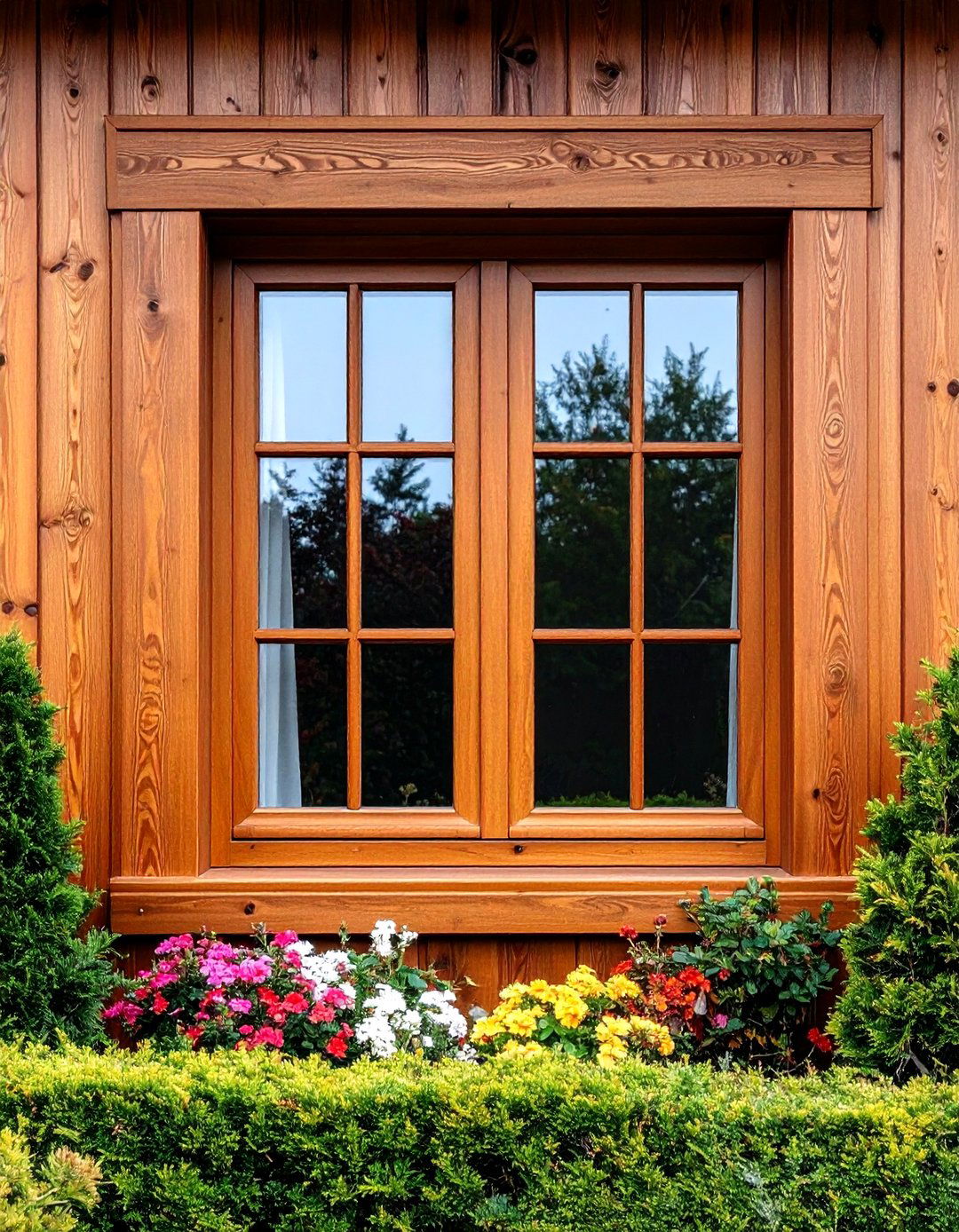
Textured finishes are gaining popularity as alternatives to traditional glossy surfaces, offering modern, understated sophistication that complements contemporary design trends. These finishes include wood grain textures, smooth matte surfaces, and subtle patterns that add visual interest without overwhelming the overall design. Advanced materials like fiber cement can replicate realistic wood grain patterns while providing superior durability and weather resistance. Textured finishes work particularly well in climates with intense sun exposure, as matte surfaces resist fading and show fewer imperfections than high-gloss alternatives. The variety of available textures allows you to coordinate trim finishes with siding materials, roofing, and other exterior elements for cohesive design relationships. Different finish options, from glossy modern effects to distressed rustic aesthetics, allow customization that reflects personal style while maintaining professional appearance. Consider textured trim finishes when you want visual interest that comes from surface quality rather than color contrast.
18. Integrated Shutter Window Trim Systems
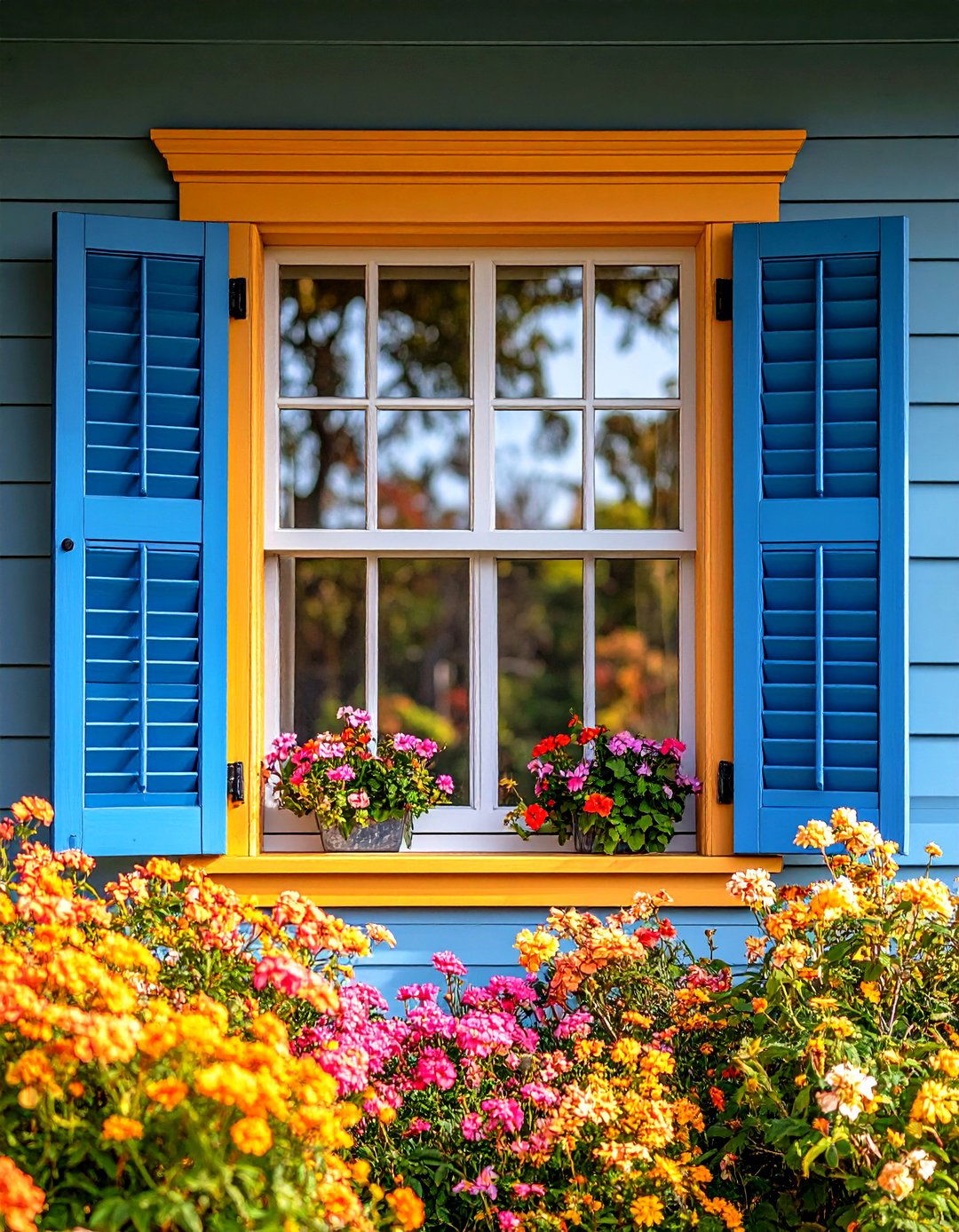
False shutters fixed beside windows create greater visual space and style while allowing coordination between trim colors and shutter finishes for cohesive design. This integrated approach treats shutters and trim as unified design elements rather than separate components, creating stronger architectural statements and improved proportions. Coordinated shutter and trim systems work particularly well with cottage, coastal, and farmhouse styles where traditional proportions and authentic details enhance overall character. The approach allows you to use shutters functionally or decoratively while ensuring color relationships remain harmonious throughout the design. Quality shutter materials including wood, composite, and vinyl can be matched with corresponding trim materials and finishes for long-term durability and consistent appearance. Various shutter styles and colors coordinate with trim options, allowing customization that matches architectural details and personal preferences. Consider integrated systems when you want windows that make strong architectural statements through coordinated elements rather than individual components.
19. Energy-Efficient Window Trim Design
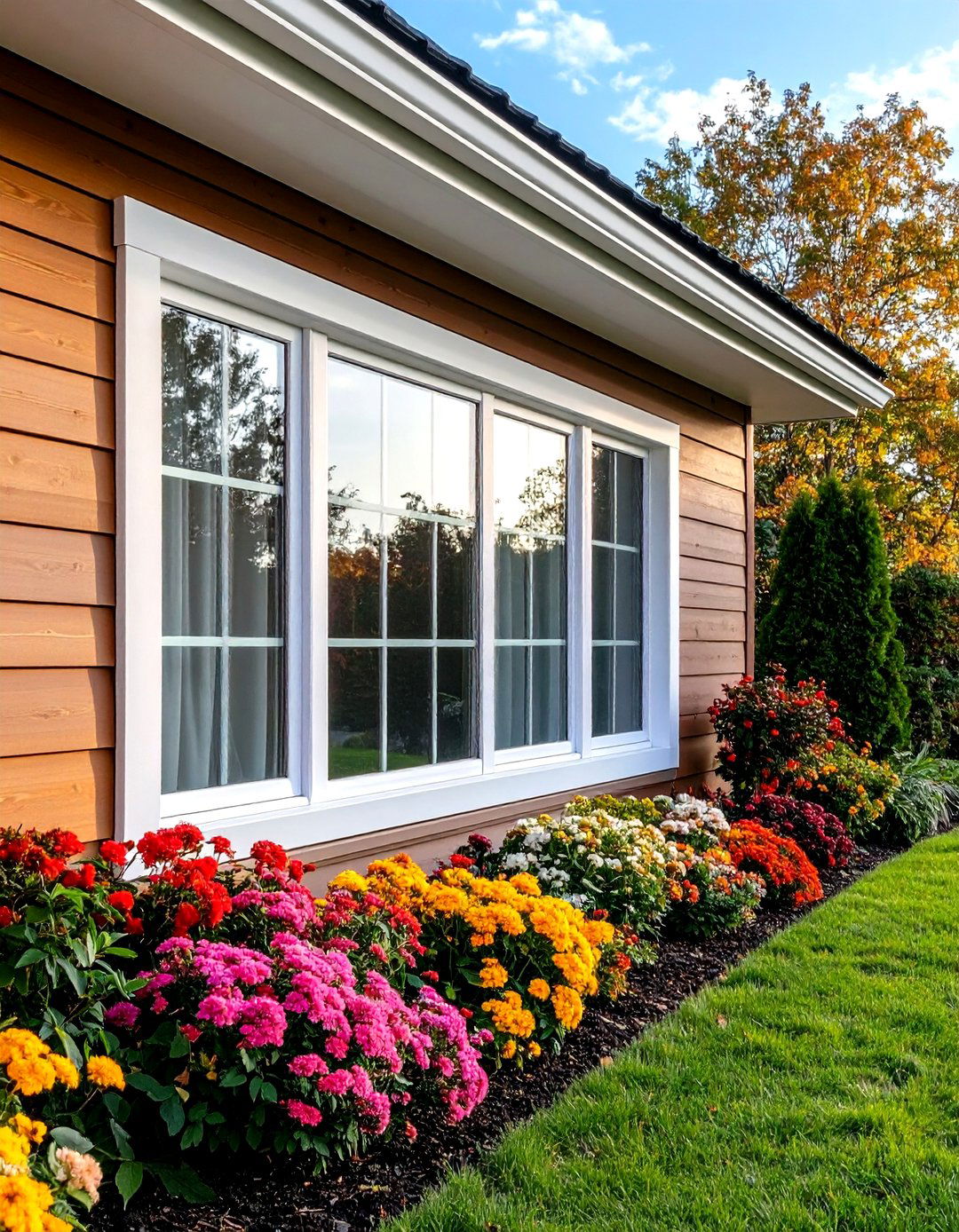
Modern trim design increasingly emphasizes energy efficiency alongside aesthetic appeal, creating solutions that enhance both comfort and utility performance. Properly installed trim helps seal gaps around window frames, improving insulation and energy efficiency while preventing moisture and pest infiltration. Contemporary trends favor wide, energy-efficient windows that maximize natural light and reduce utility costs, requiring trim solutions that accommodate these performance-focused installations. Advanced sealing systems, insulated trim components, and weather-resistant materials contribute to overall building envelope performance while maintaining attractive appearances. The integration of continuous insulation details and vapor barriers requires careful coordination between trim installation and window performance requirements. Quality trim materials and proper installation methods provide structural integrity and weather resistance that protect your investment while enhancing energy efficiency. Consider energy-focused trim design when building new or upgrading existing windows where performance improvements justify additional upfront investment in materials and installation quality.
20. Custom Decorative Window Trim Elements
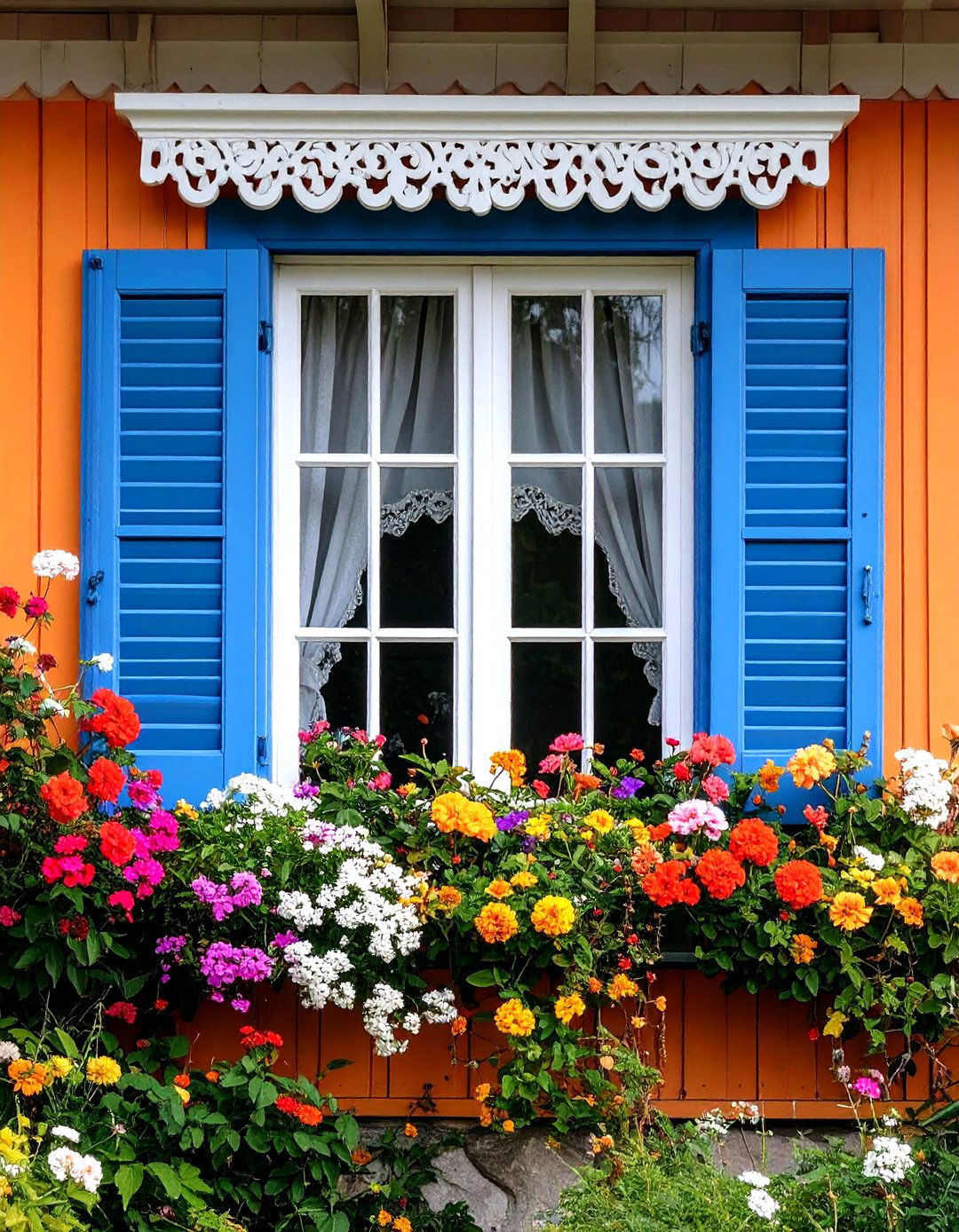
Custom decorative elements allow you to create unique window trim that reflects personal style while complementing your home's architectural character. Options include scalloped edges perfect for cottage and coastal styles, decorative corbels that enhance Victorian and historic exteriors, and custom millwork that creates one-of-a-kind architectural details. Advanced manufacturing techniques and specialty millwork shops can produce virtually any profile or decorative element you can envision, from traditional reproductions to contemporary innovations. Provincial-style trim relies heavily on depth and decorative accents to create bold visual impact through European-inspired details and sophisticated proportions. Custom elements work particularly well when restoring historic properties, creating signature looks for new construction, or adding personality to existing homes through targeted upgrades. The investment in custom millwork often provides exceptional value through improved curb appeal and architectural distinction that sets your property apart. Consider custom trim elements when standard profiles don't achieve your vision or when your home's architecture deserves unique details that enhance its character.
Conclusion:
Exterior window trim represents one of the most impactful ways to enhance your home's character while providing essential weather protection and energy efficiency benefits. From classic white wood that never goes out of style to bold black frames that make modern statements, the right trim choice transforms ordinary windows into architectural focal points. Current trends embrace both timeless neutrals and sophisticated color combinations that reflect personal style while maintaining broad appeal. Whether you choose natural materials like cedar for authentic character, engineered solutions like fiber cement for durability, or custom elements for unique distinction, quality trim installation delivers lasting value through improved aesthetics and performance. The shift toward more personalized exterior design means homeowners have unprecedented freedom to express individual style through trim colors, materials, and decorative details. Your window trim investment enhances curb appeal, protects your home's structure, and creates the distinctive character that makes your property stand out for all the right reasons.


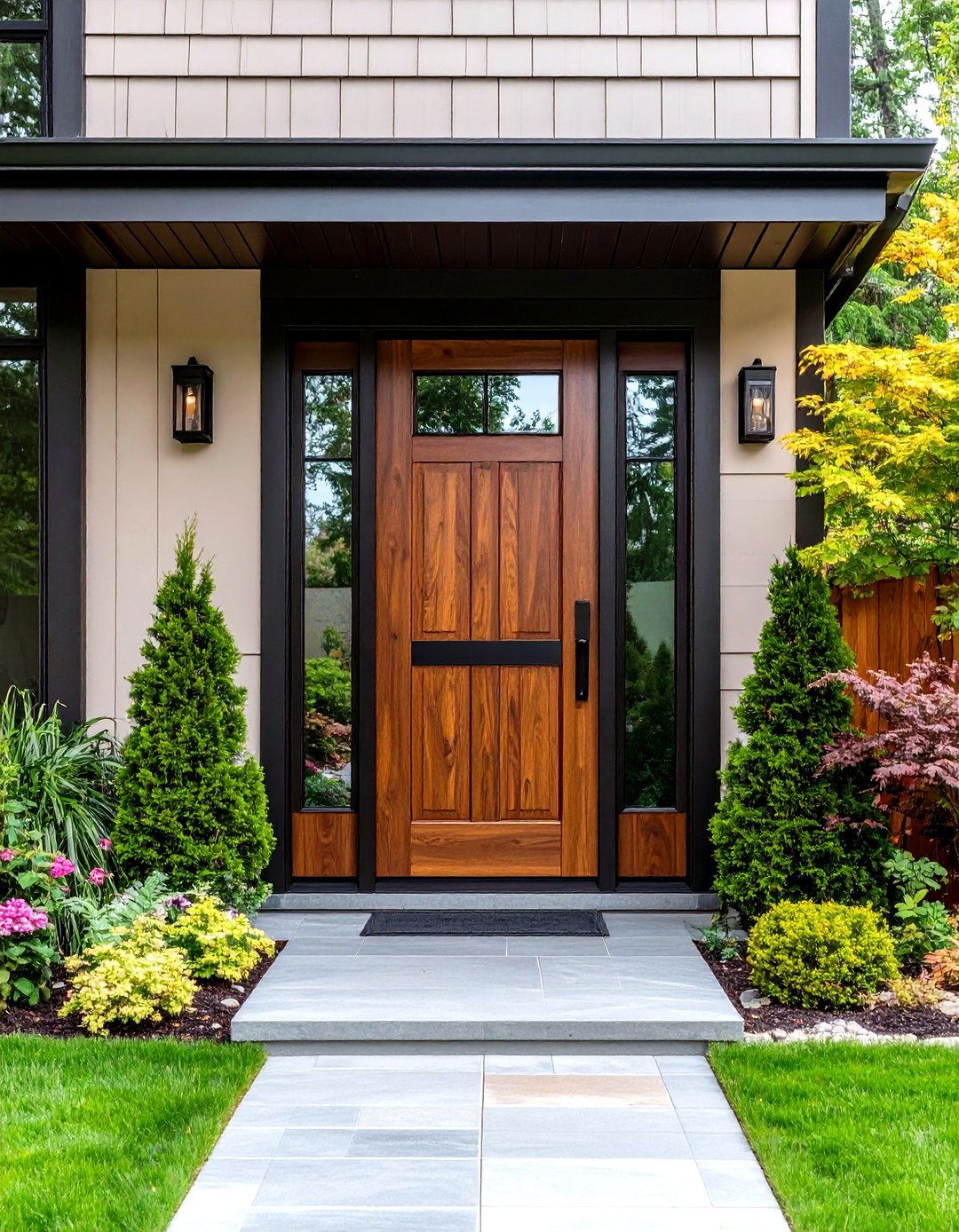

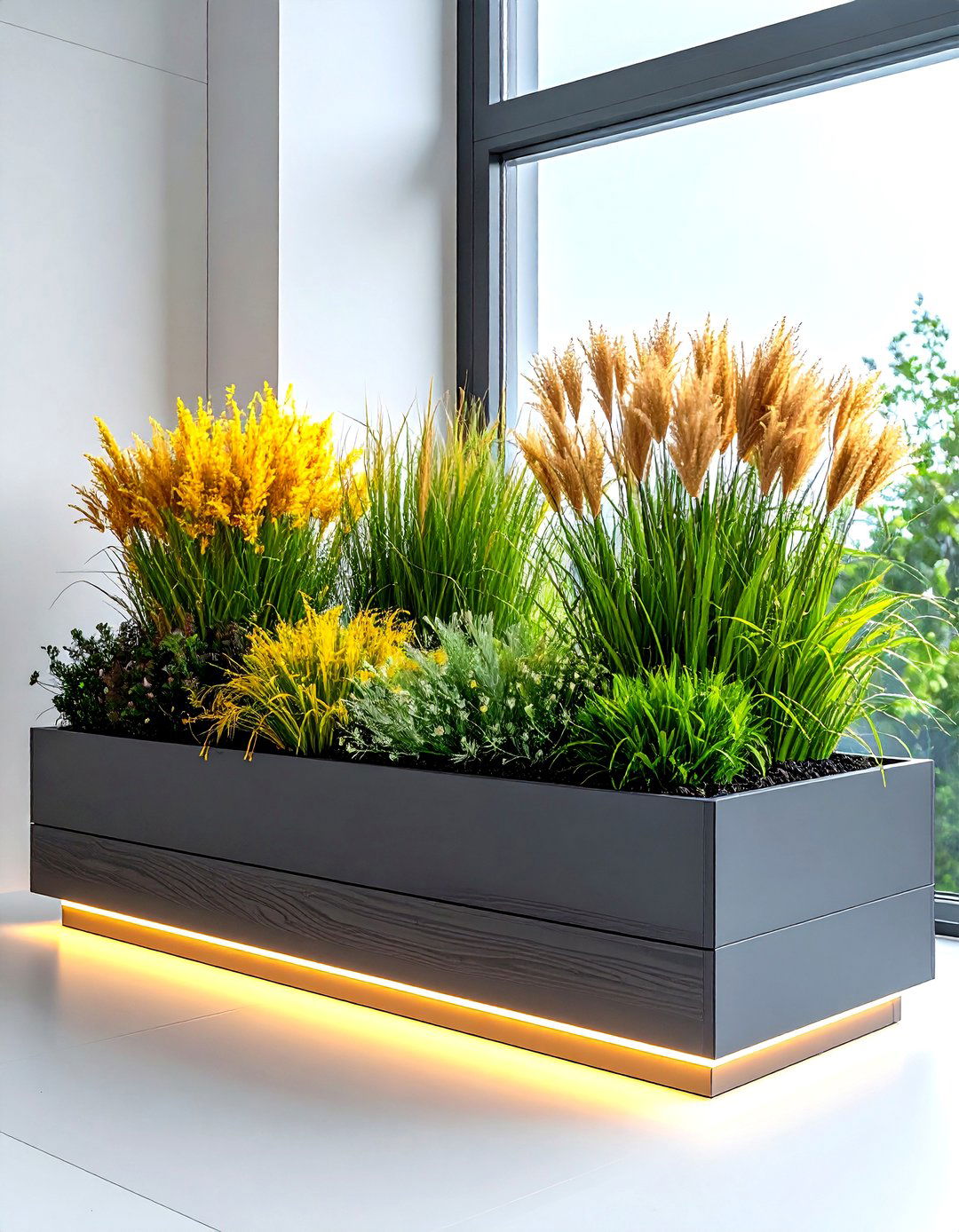
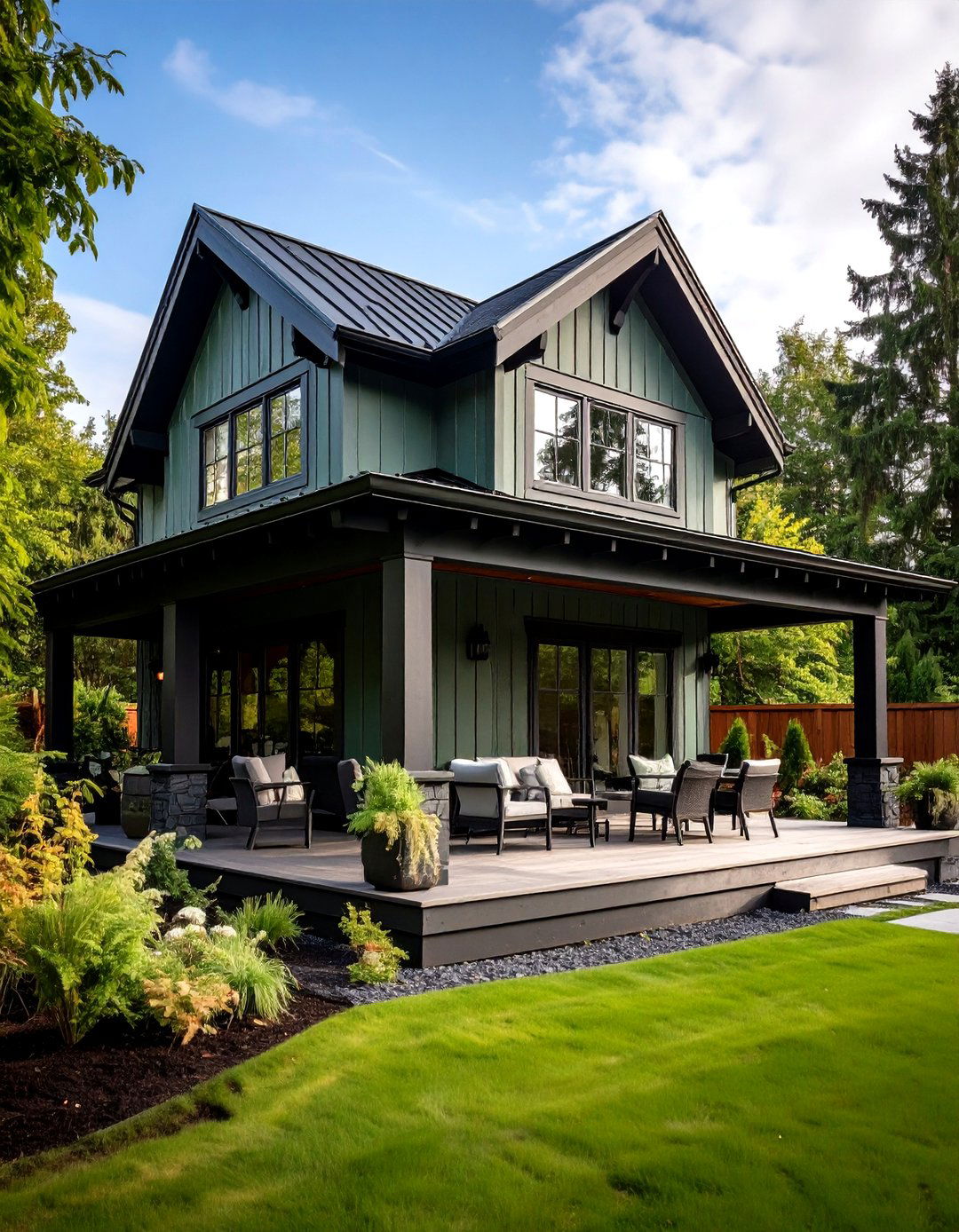

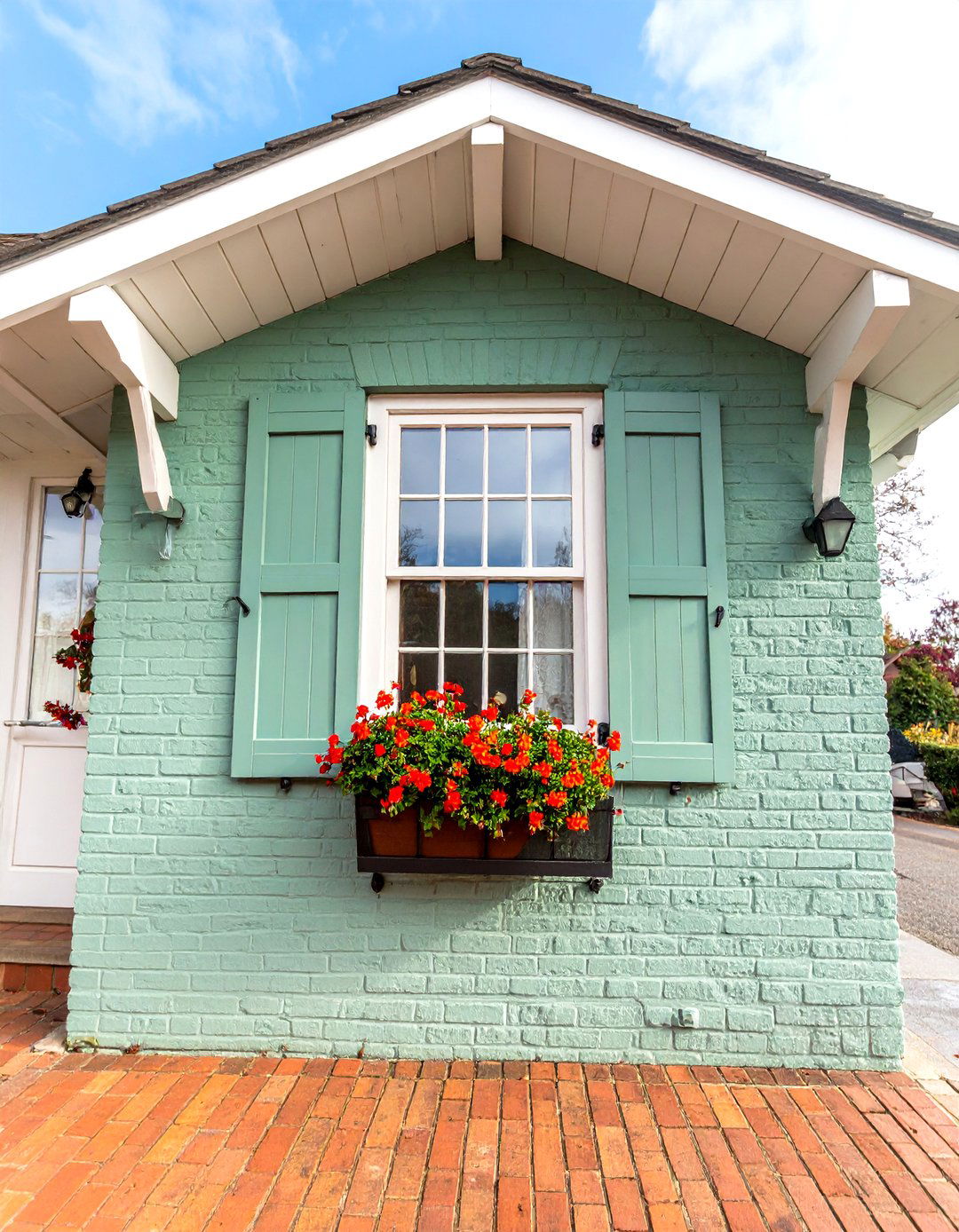
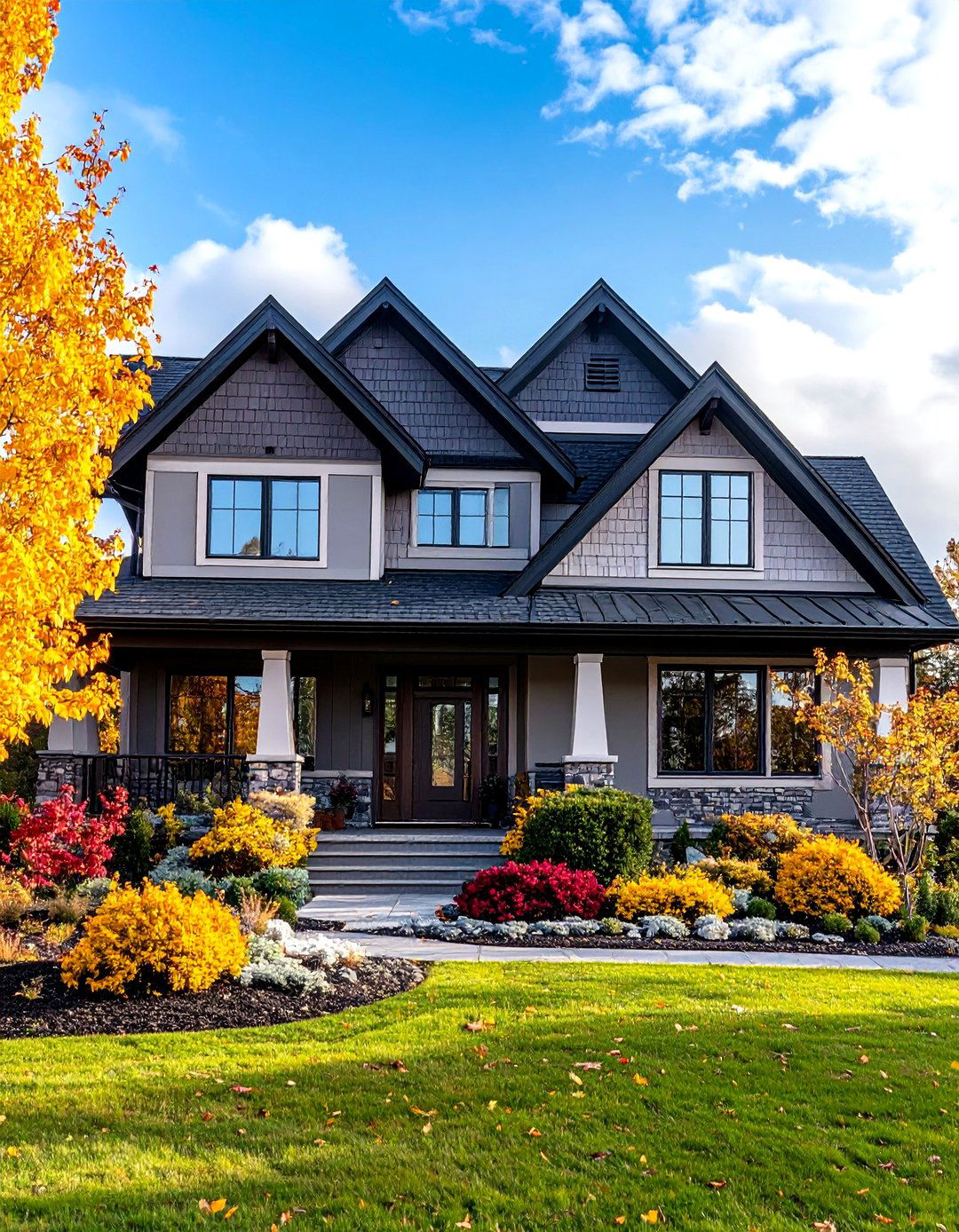
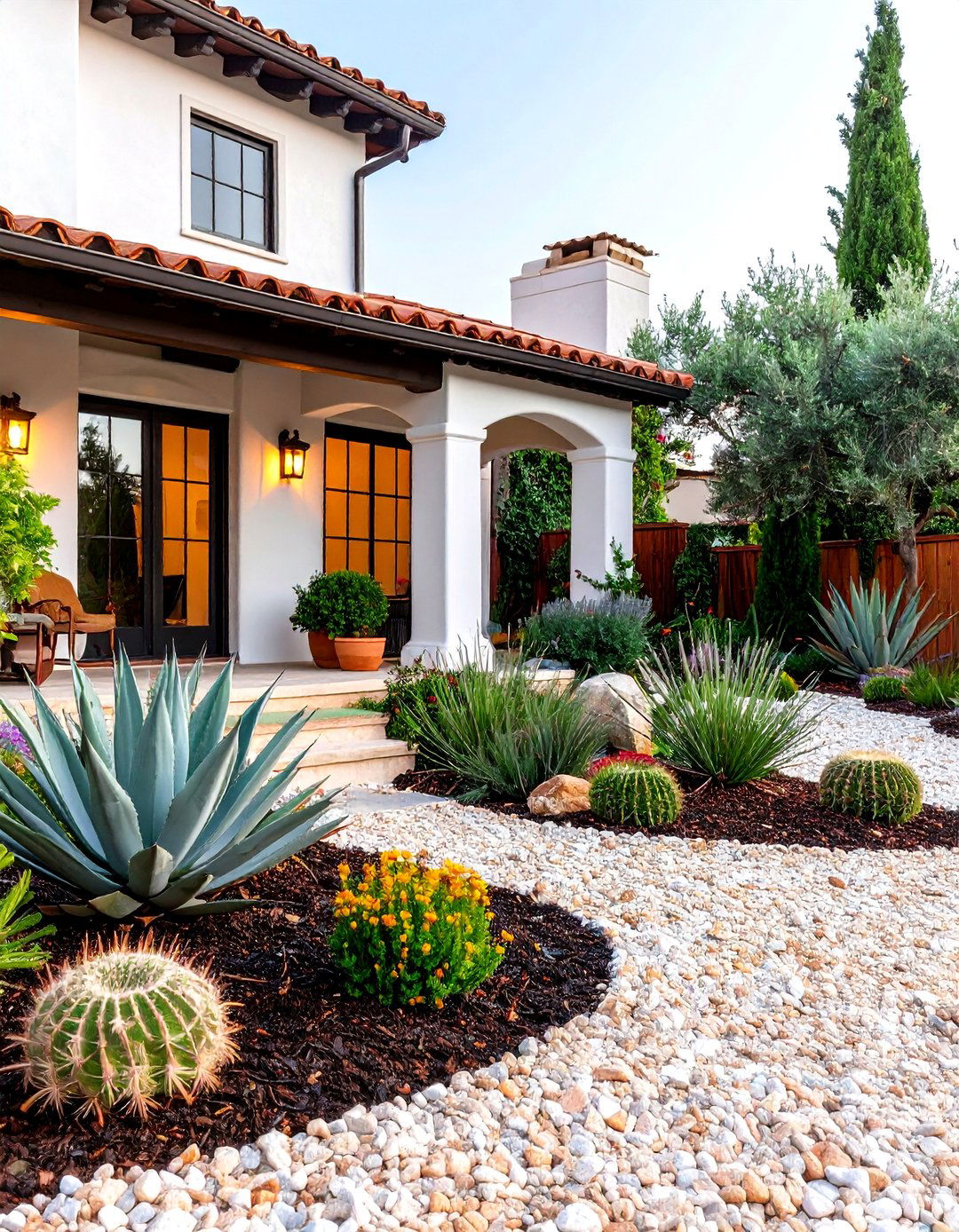
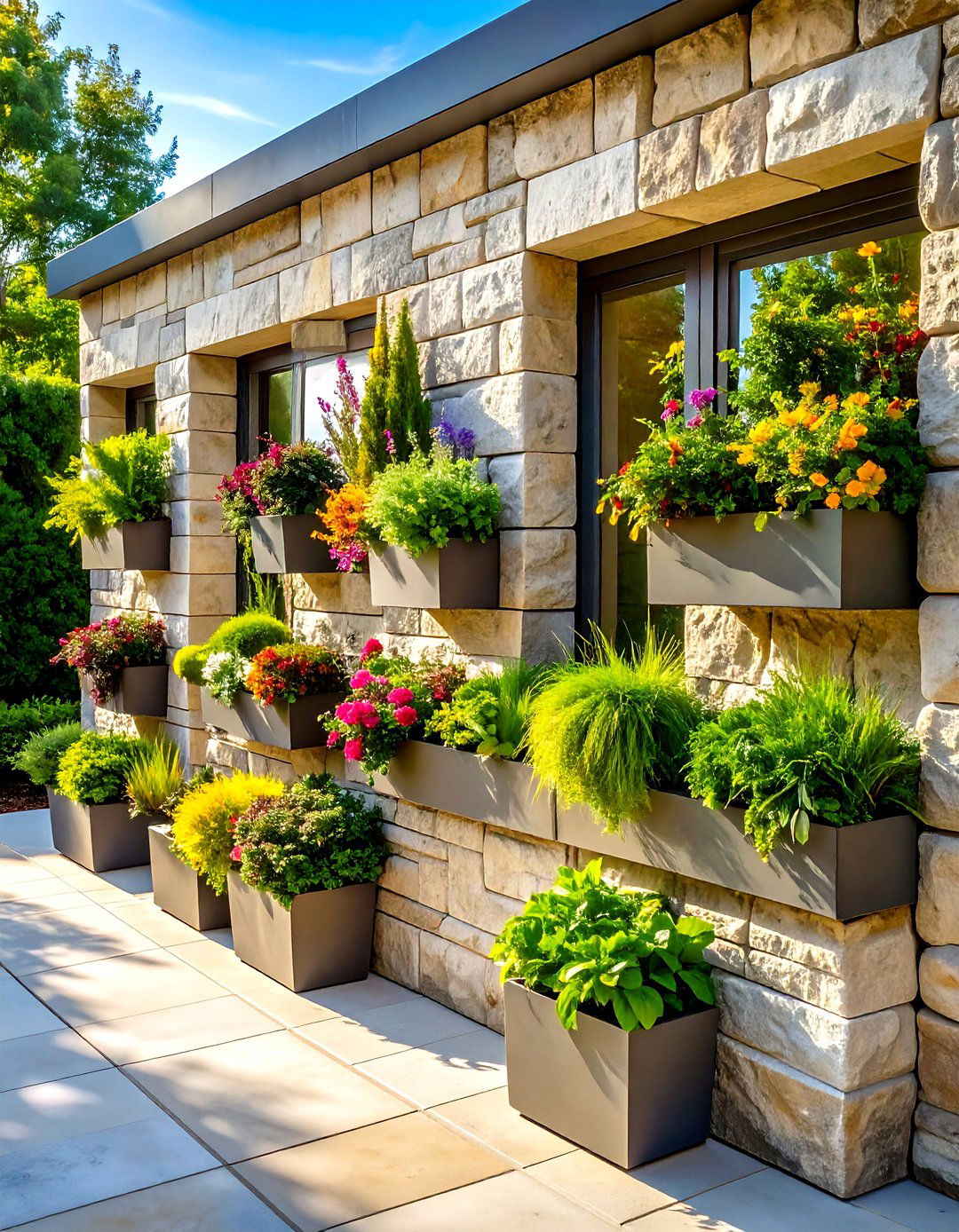
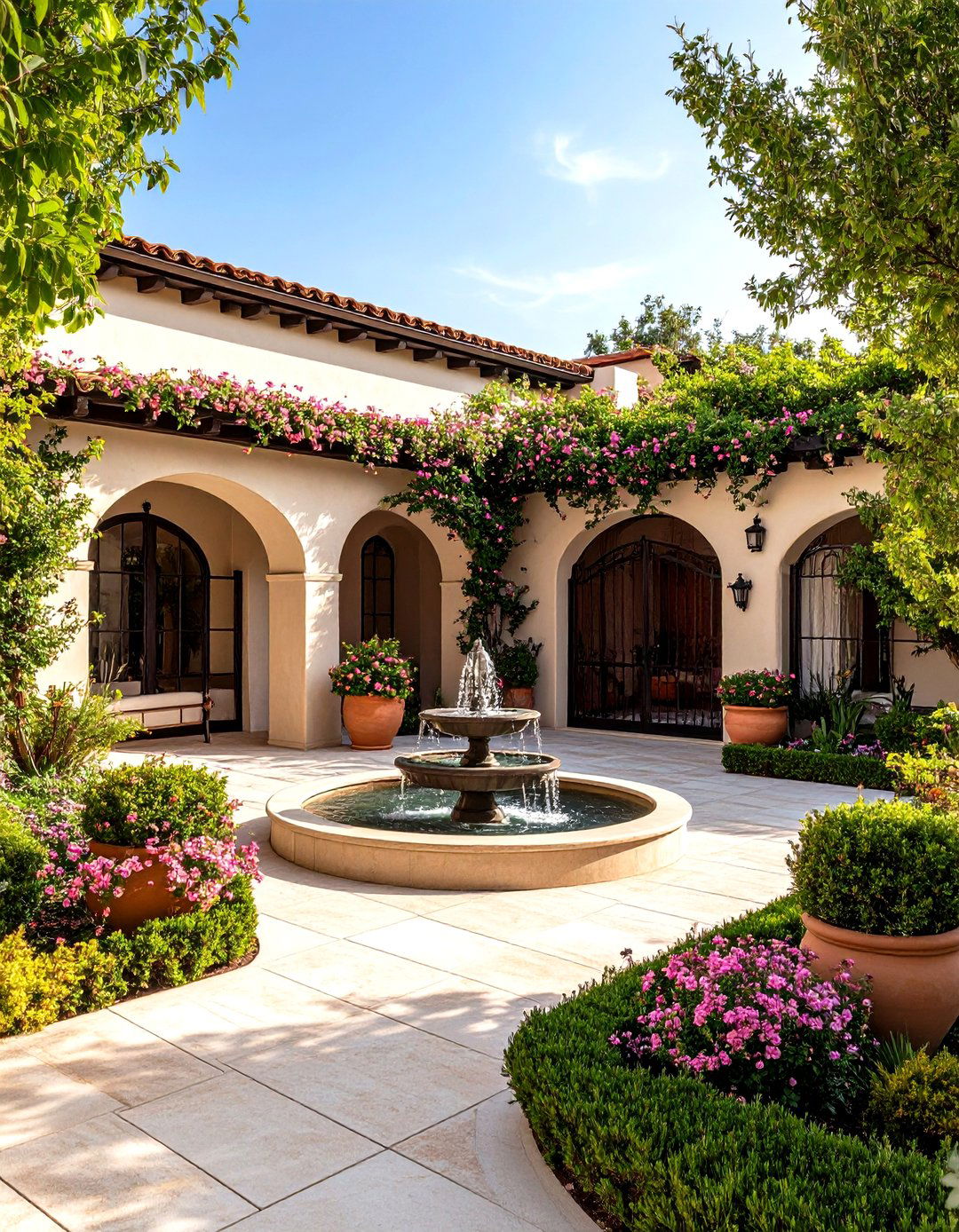

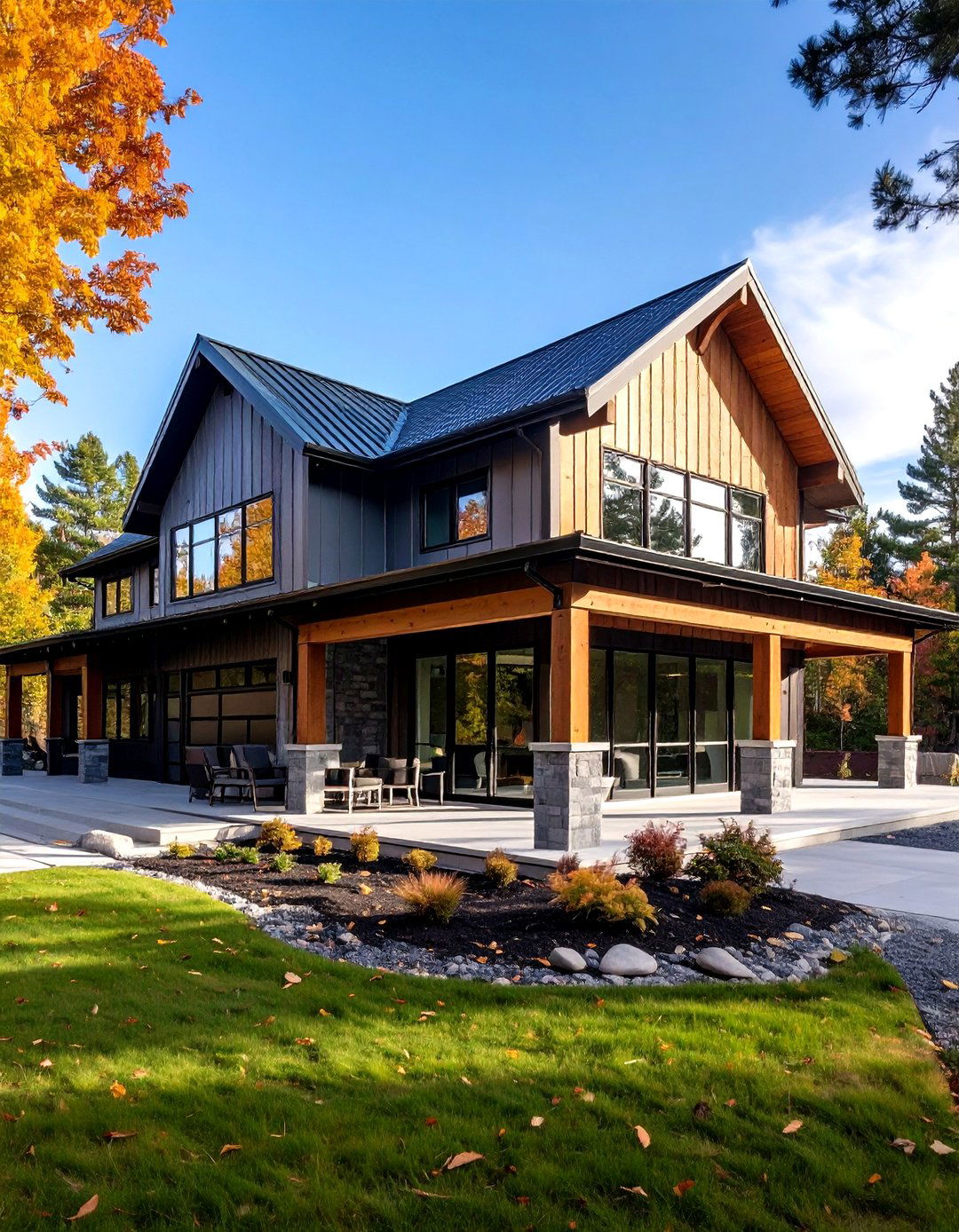
Leave a Reply